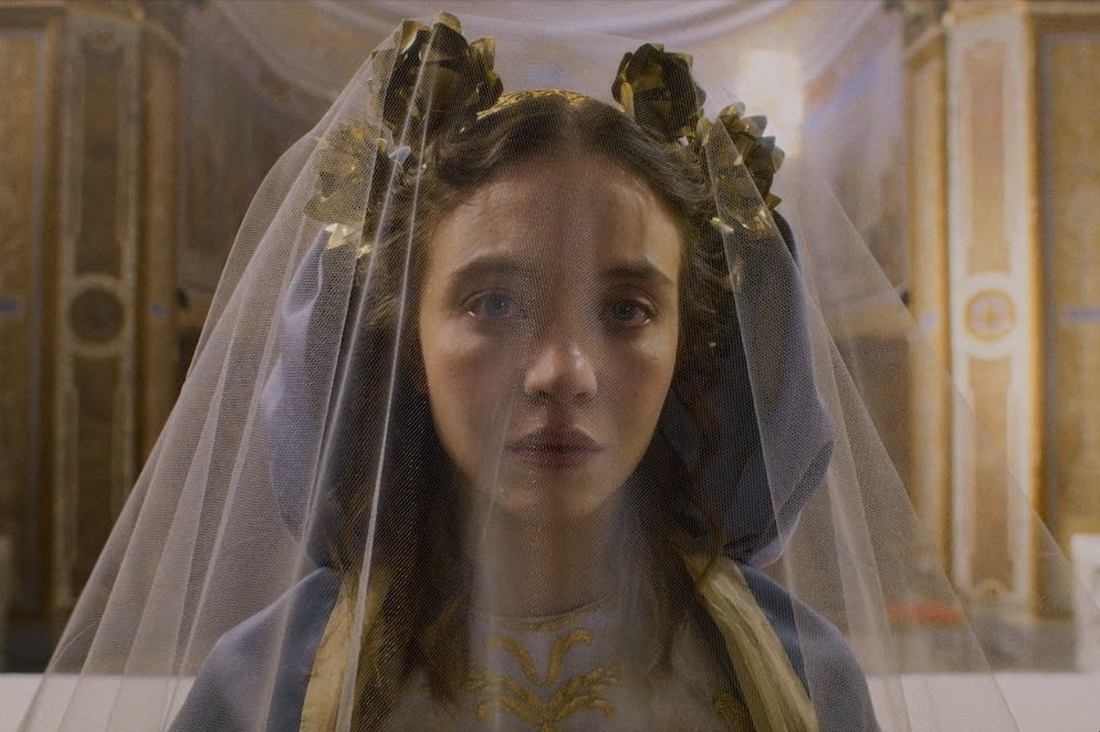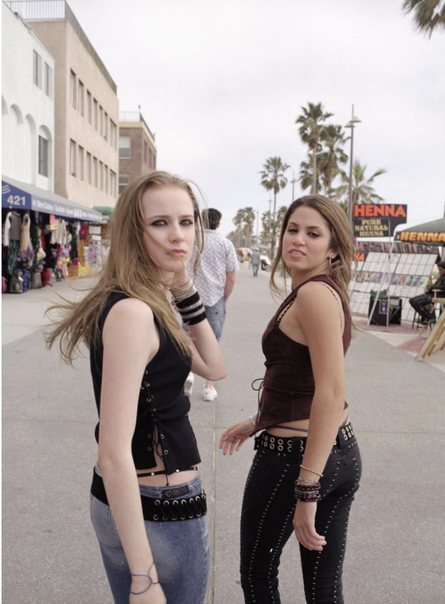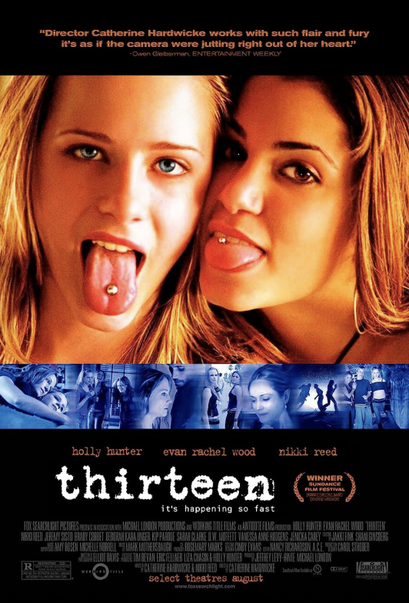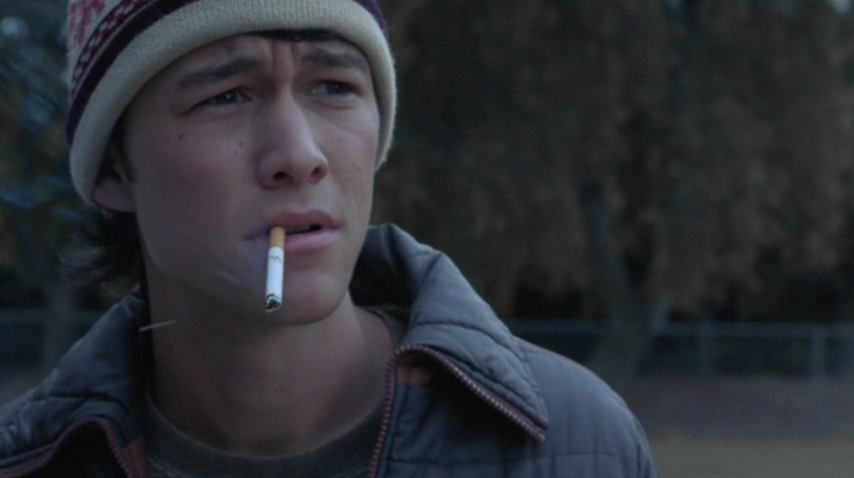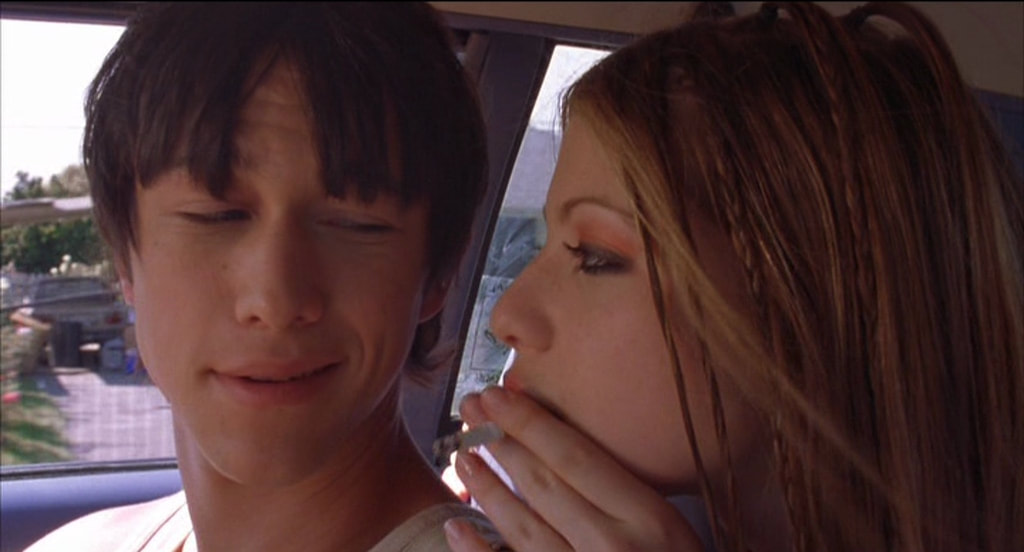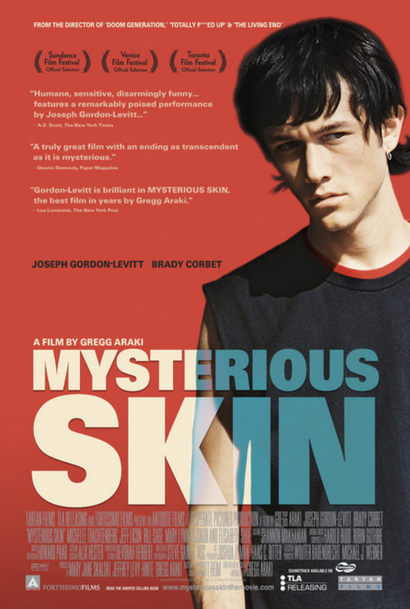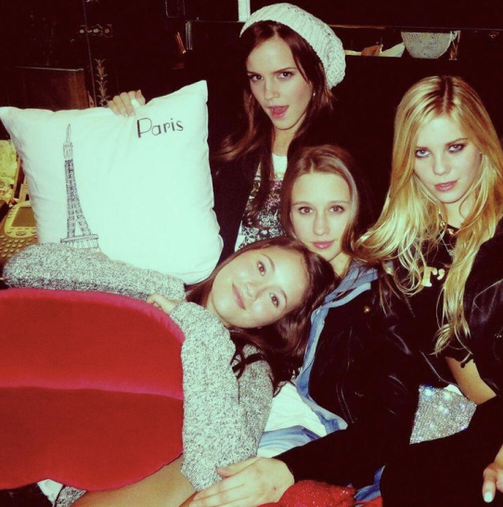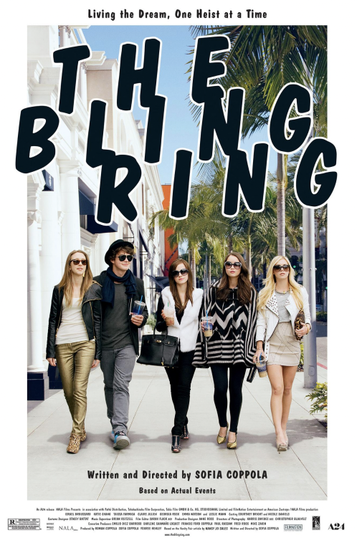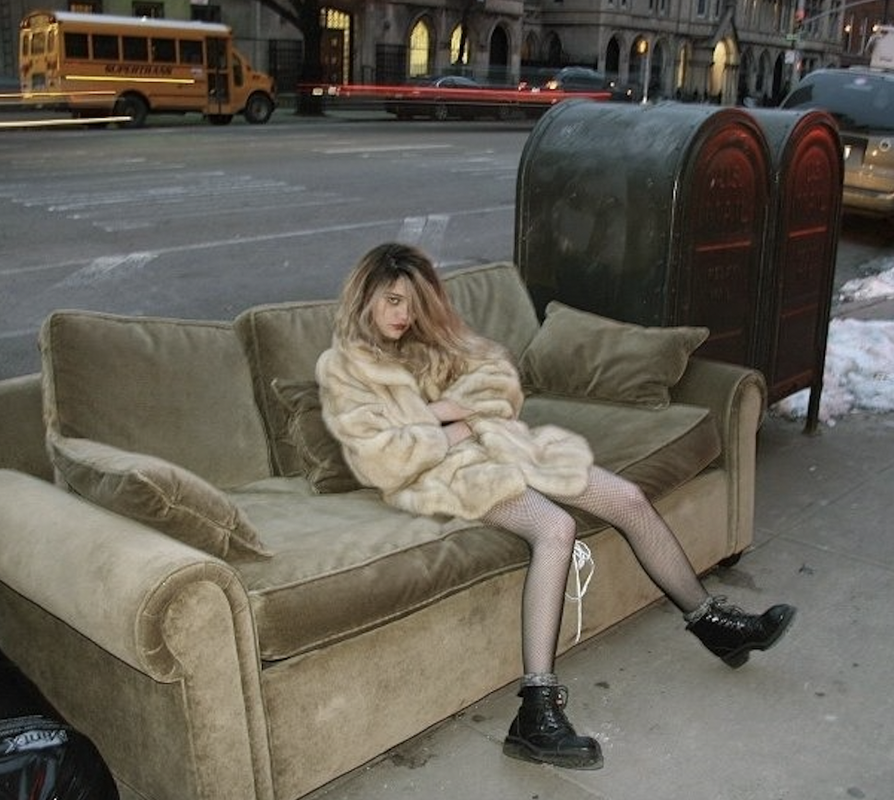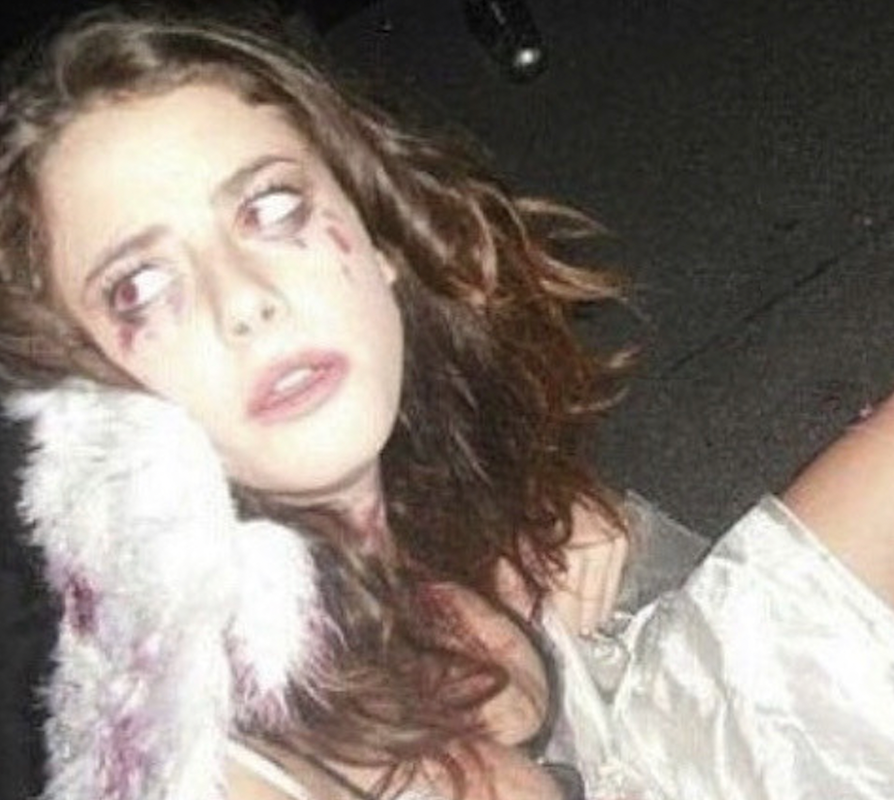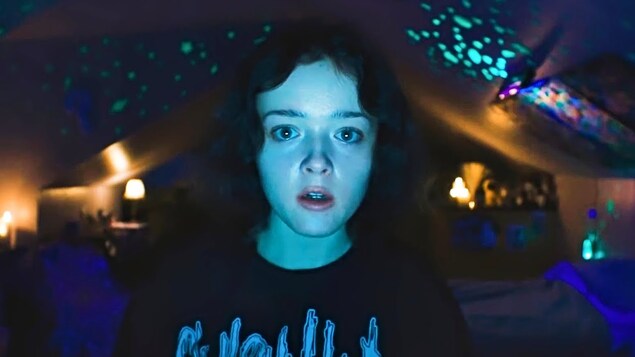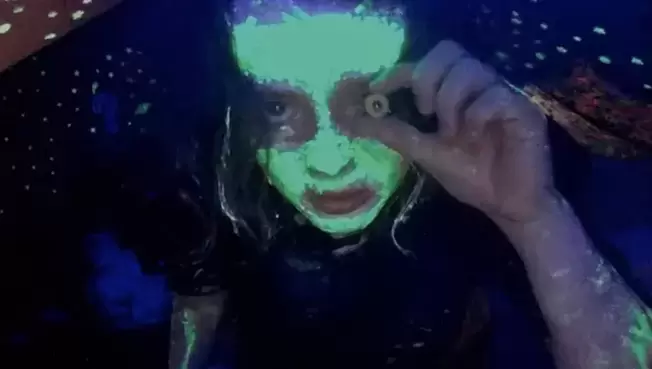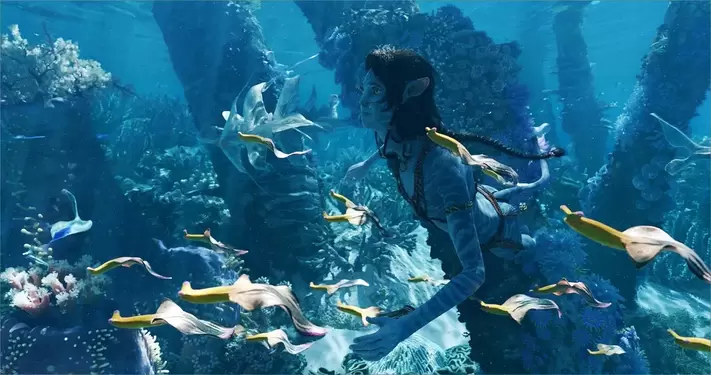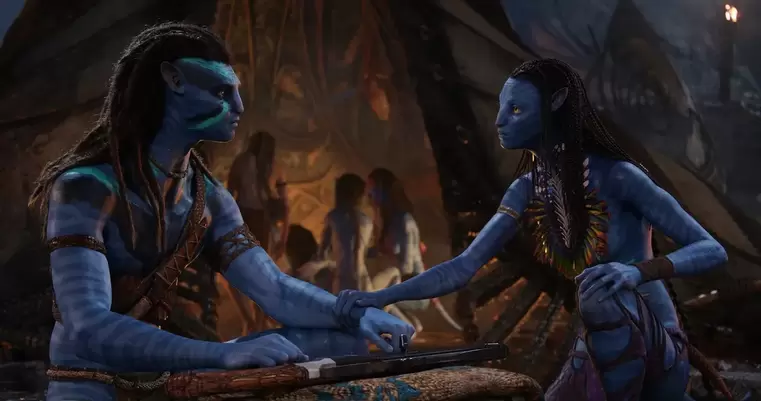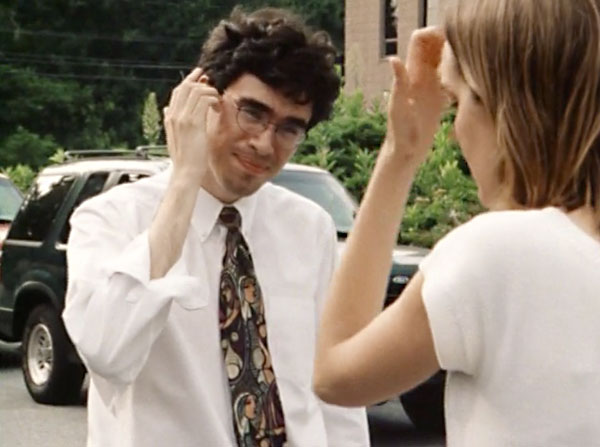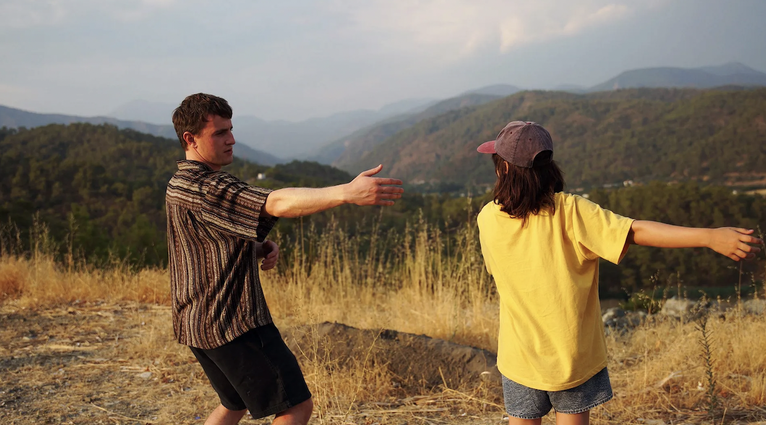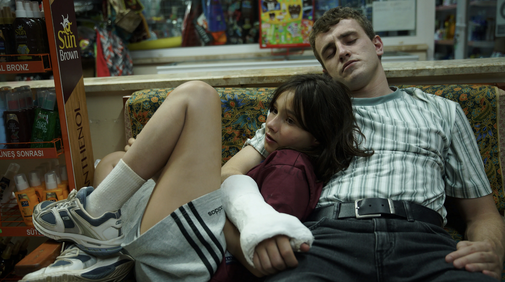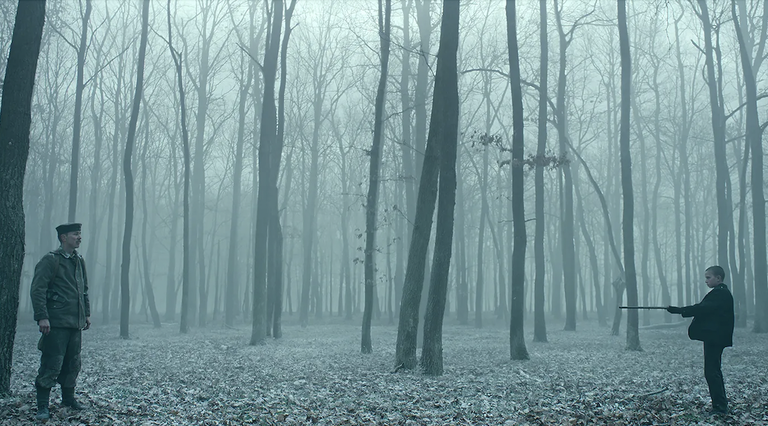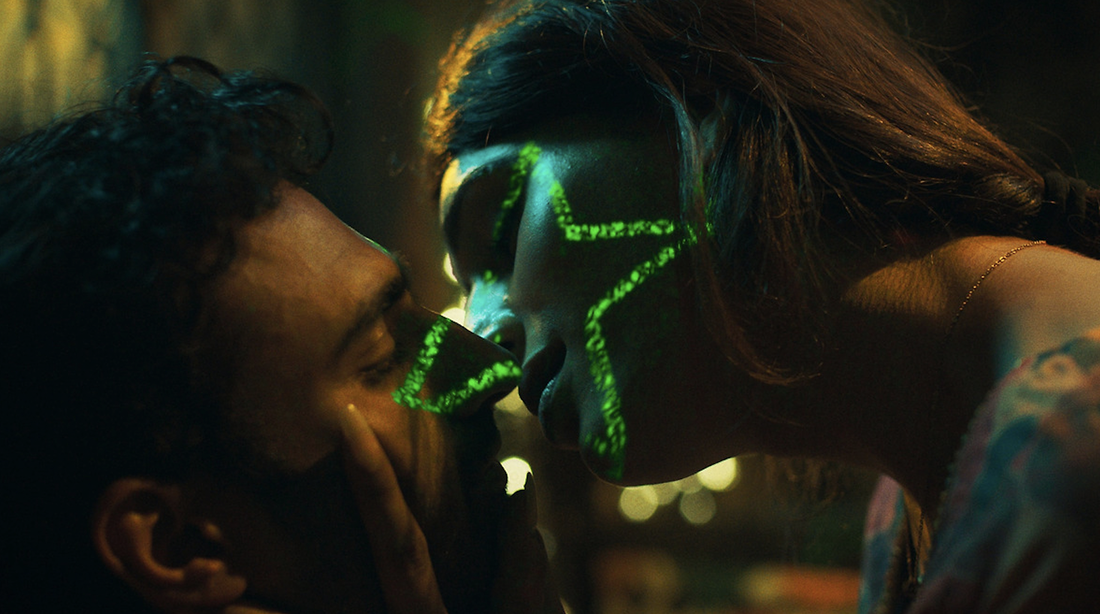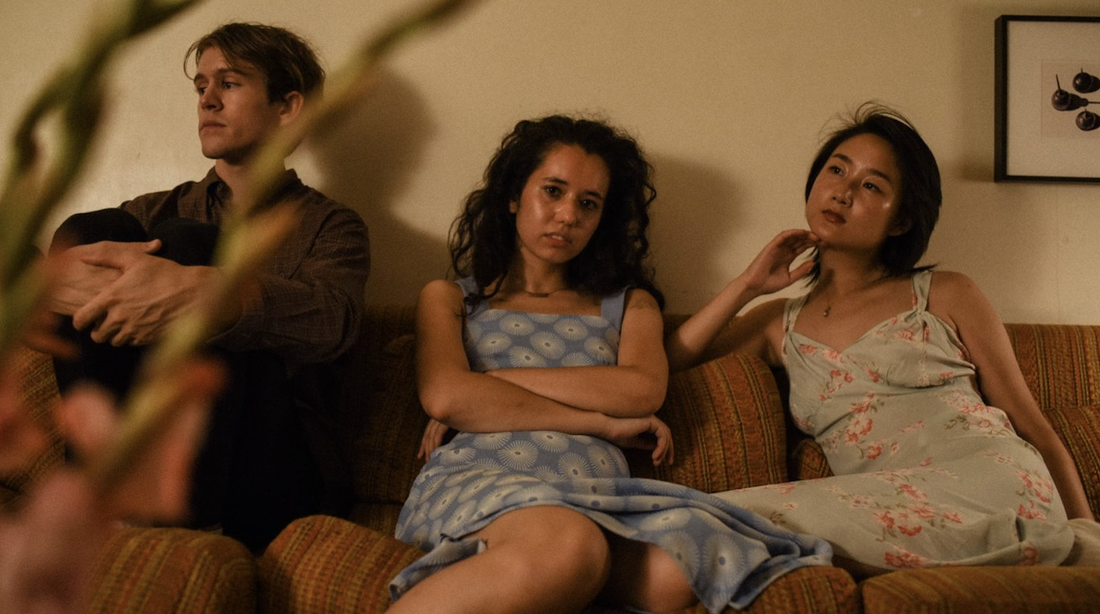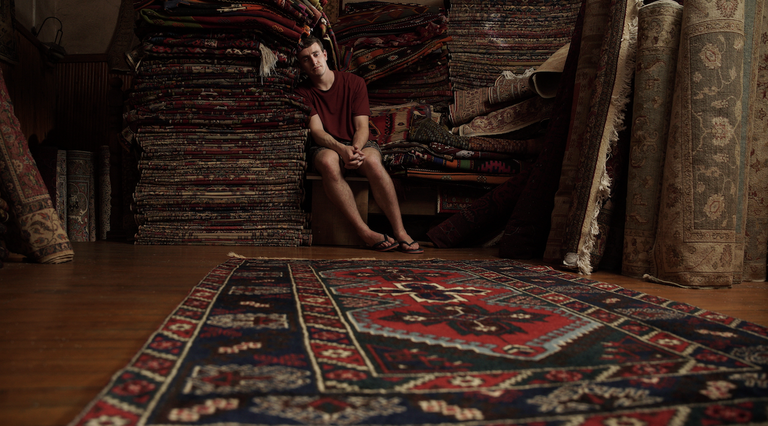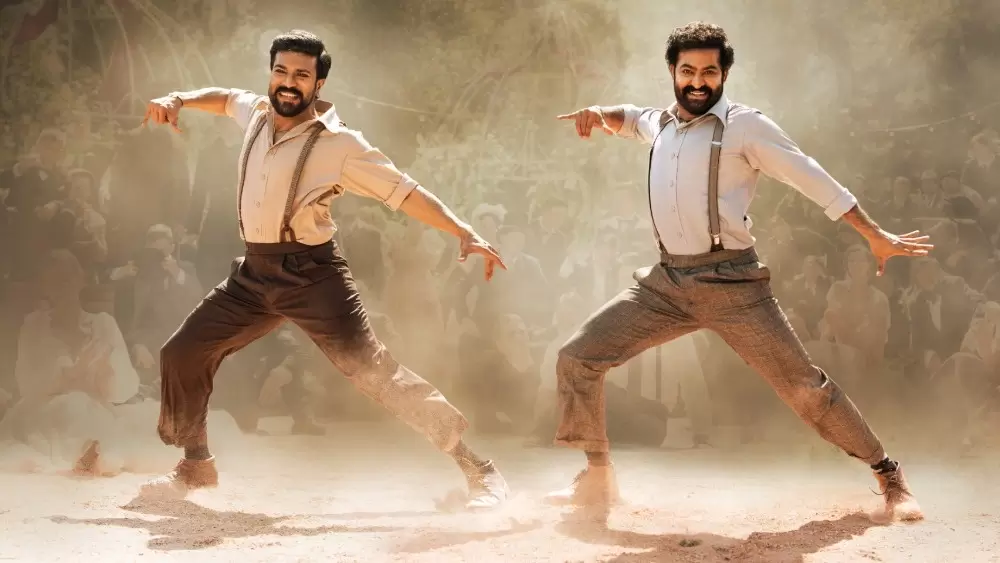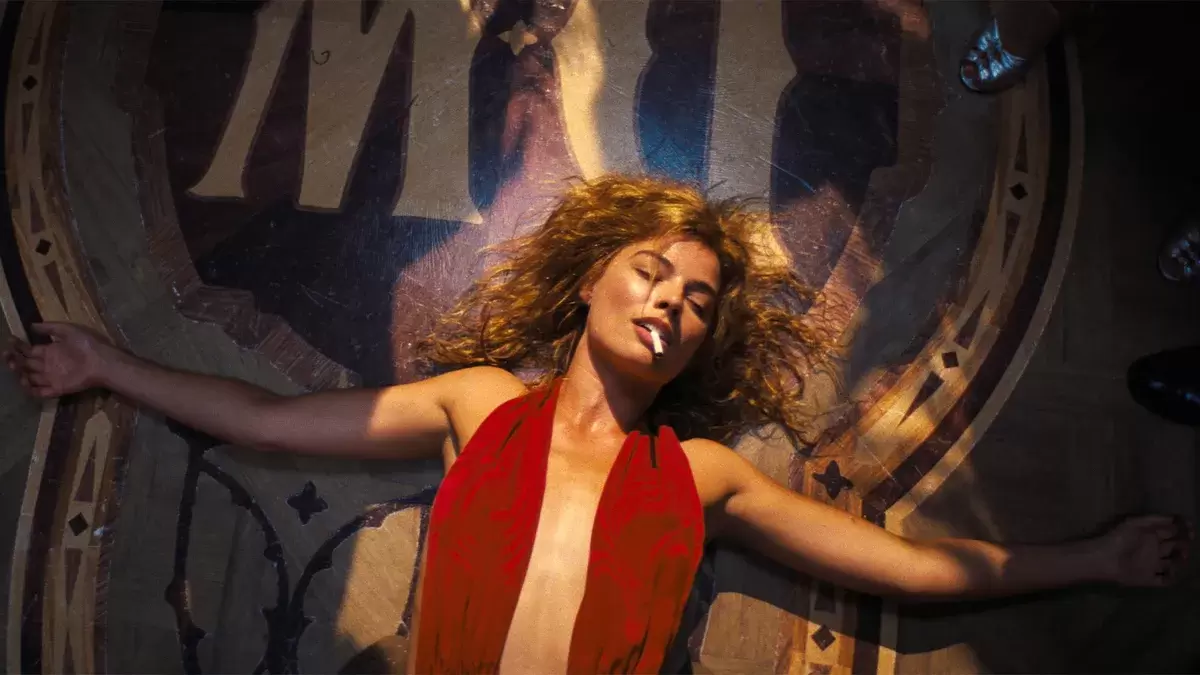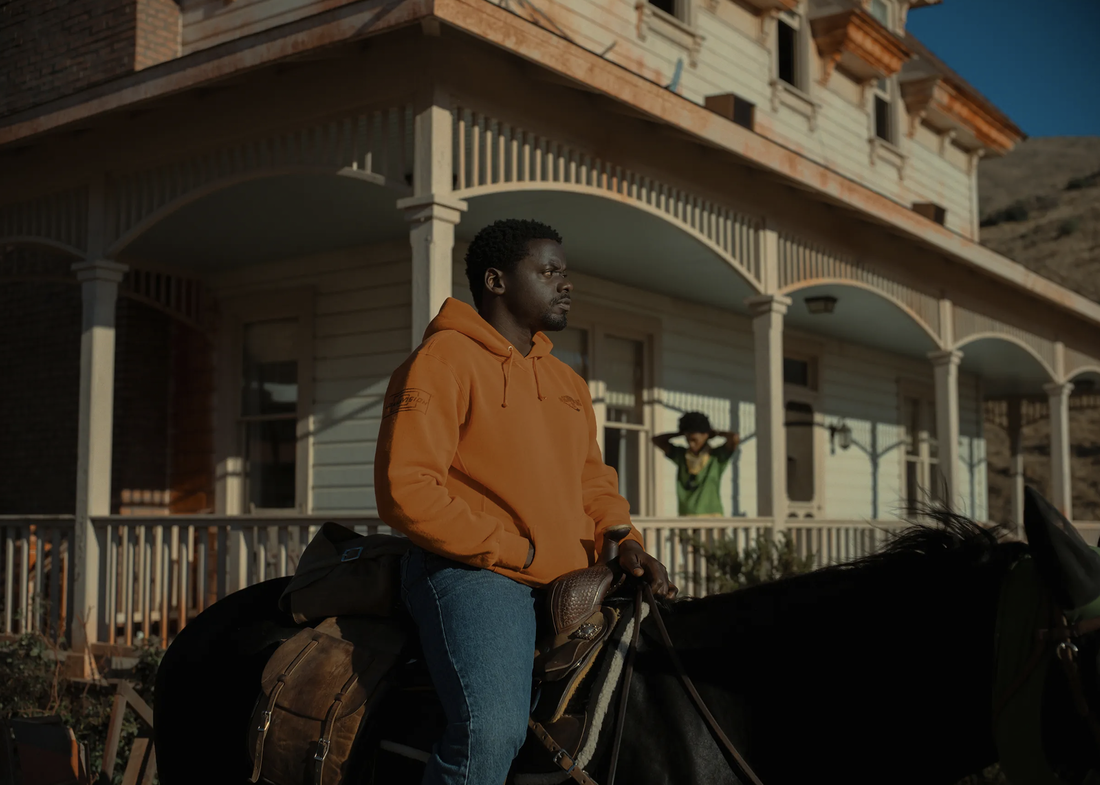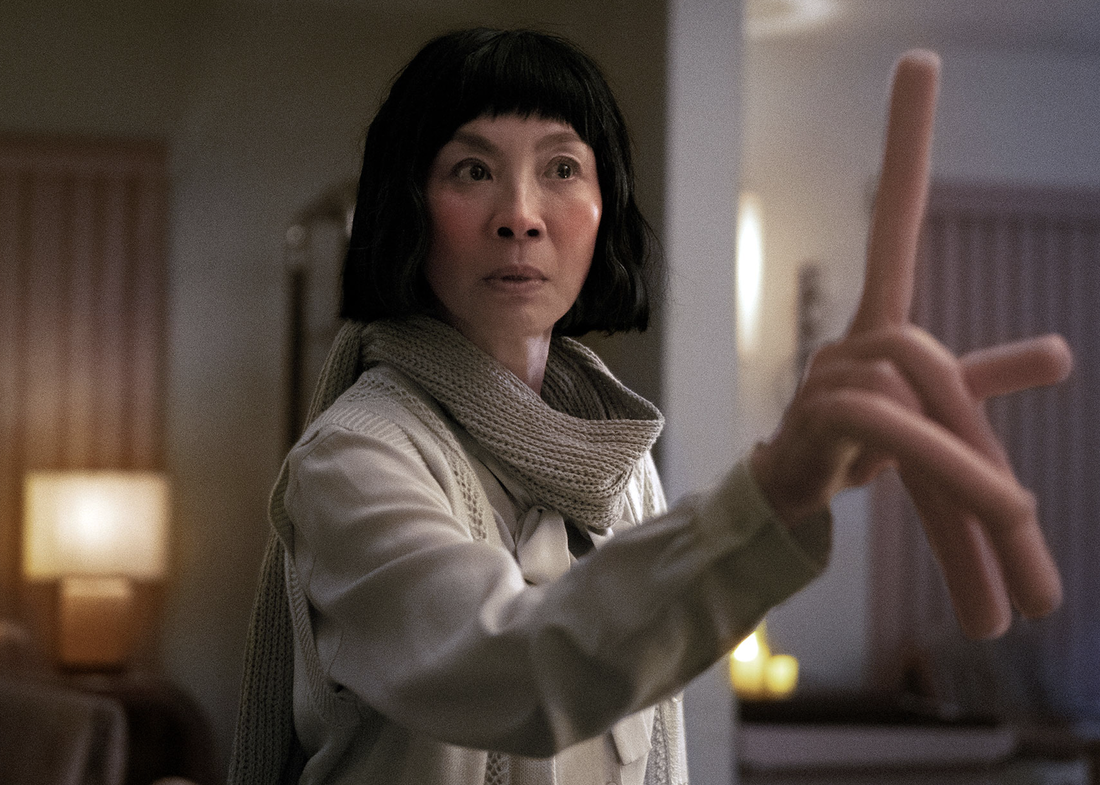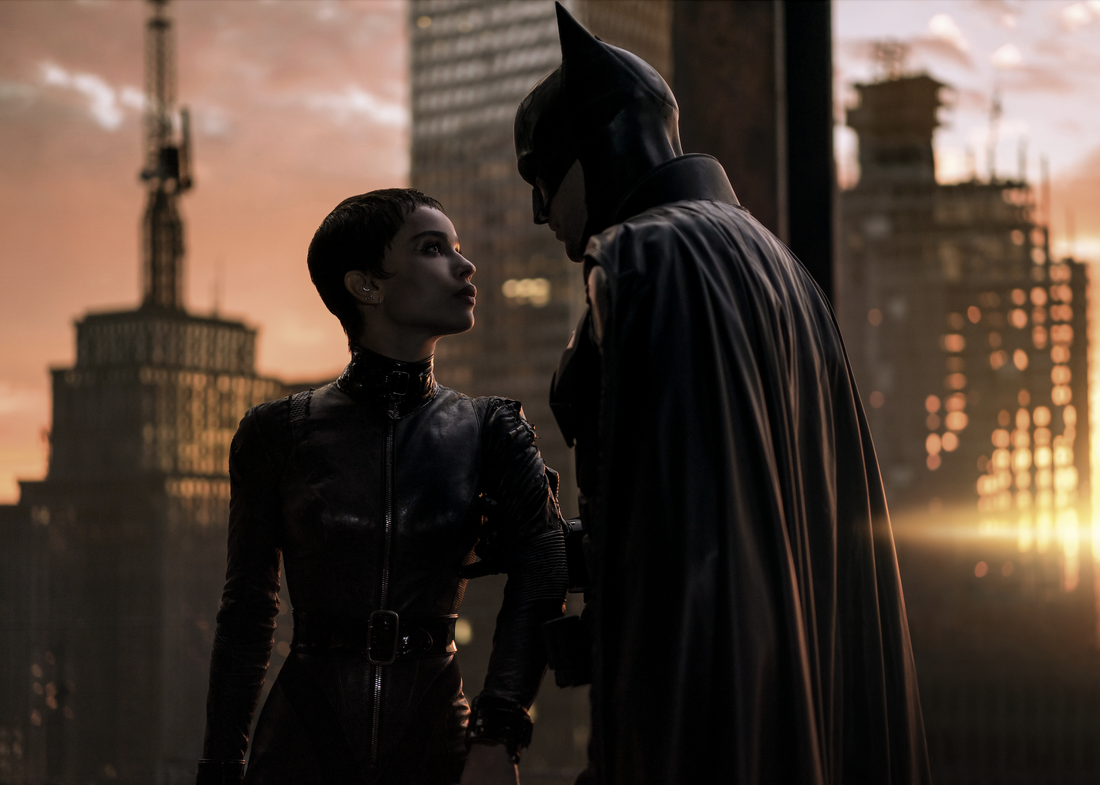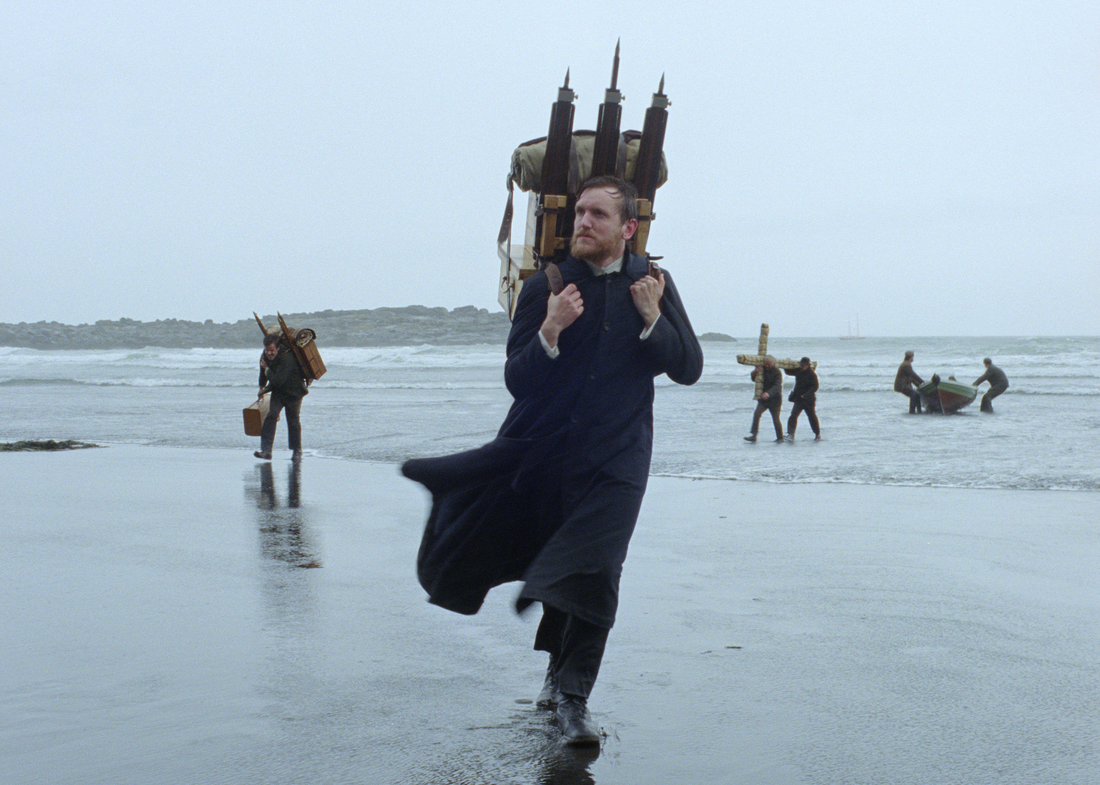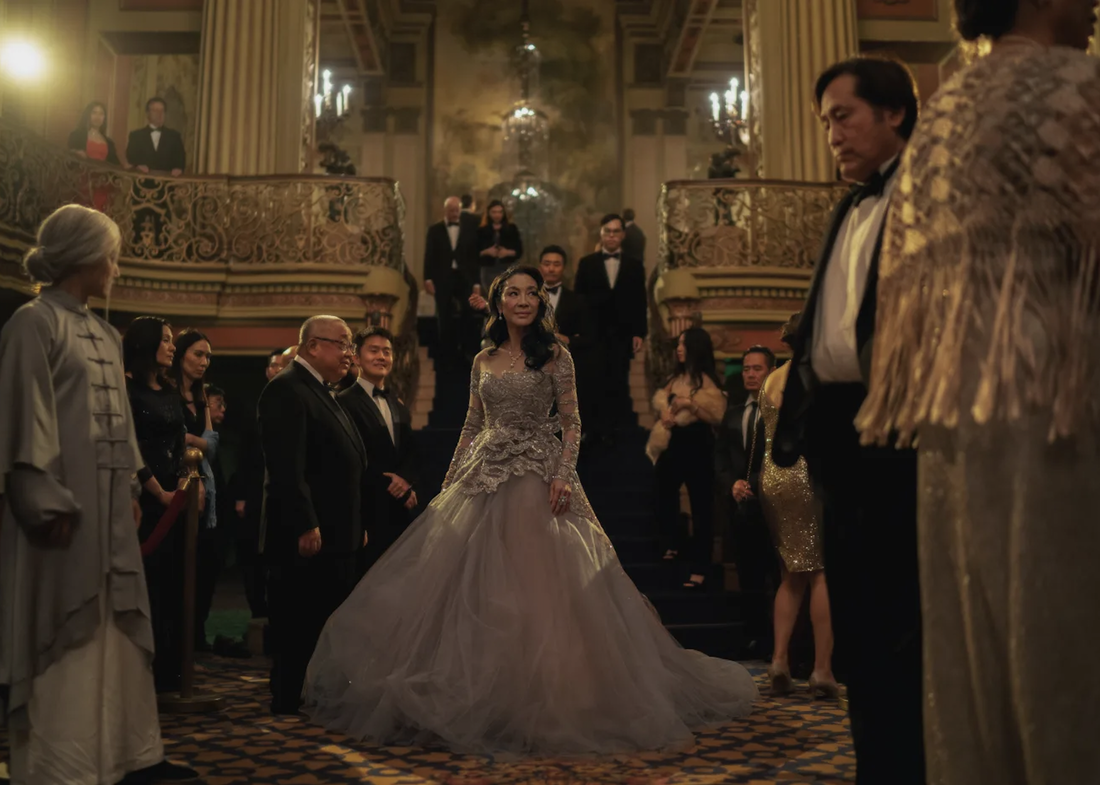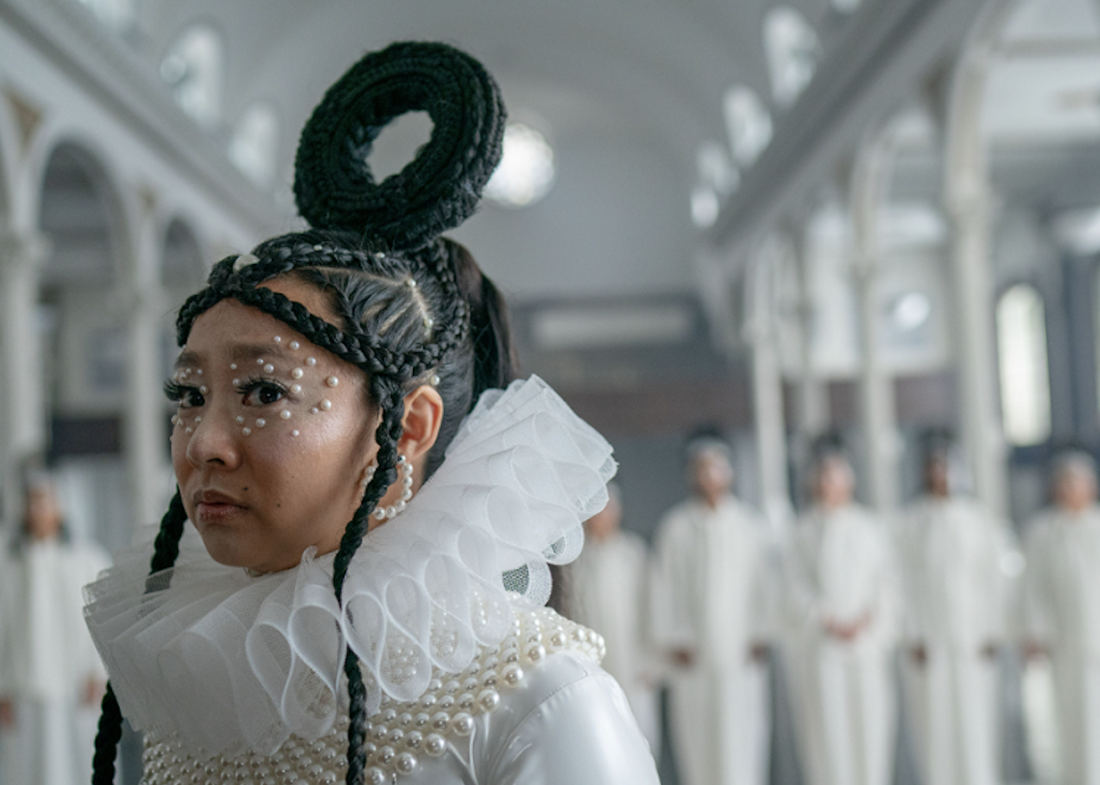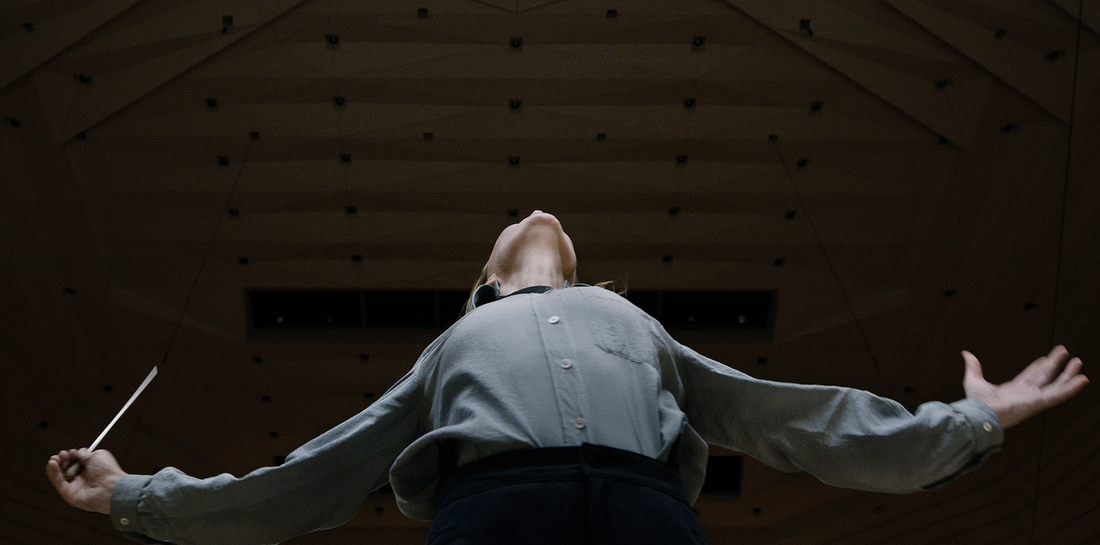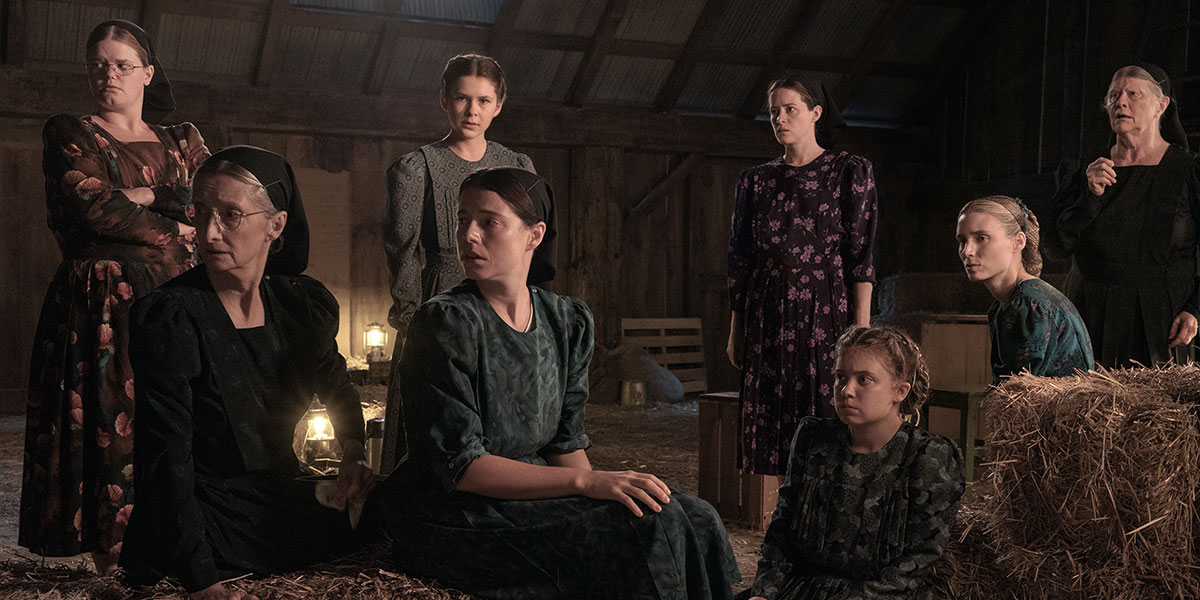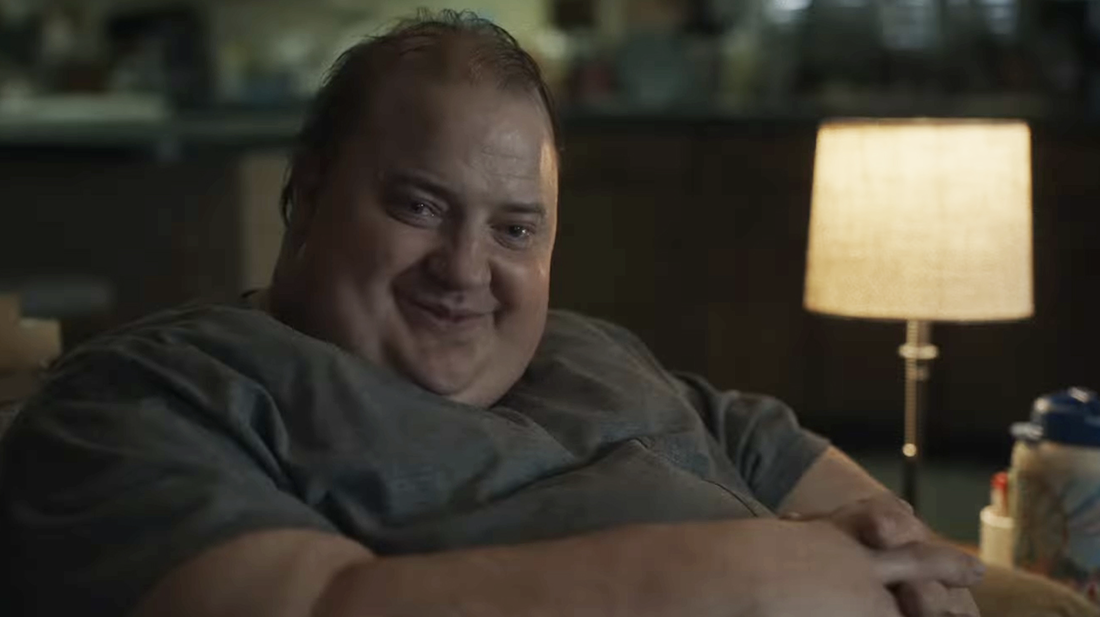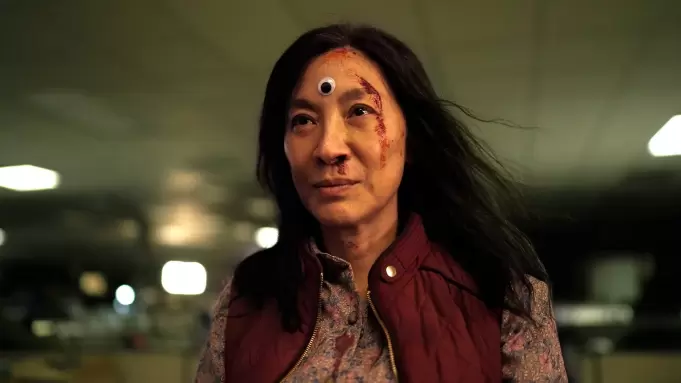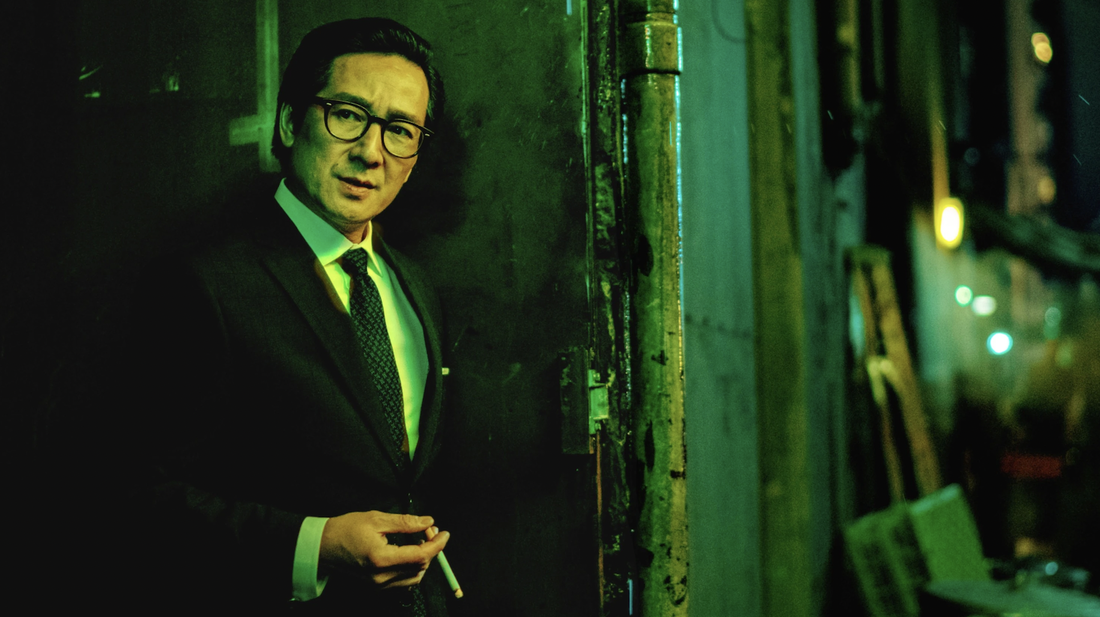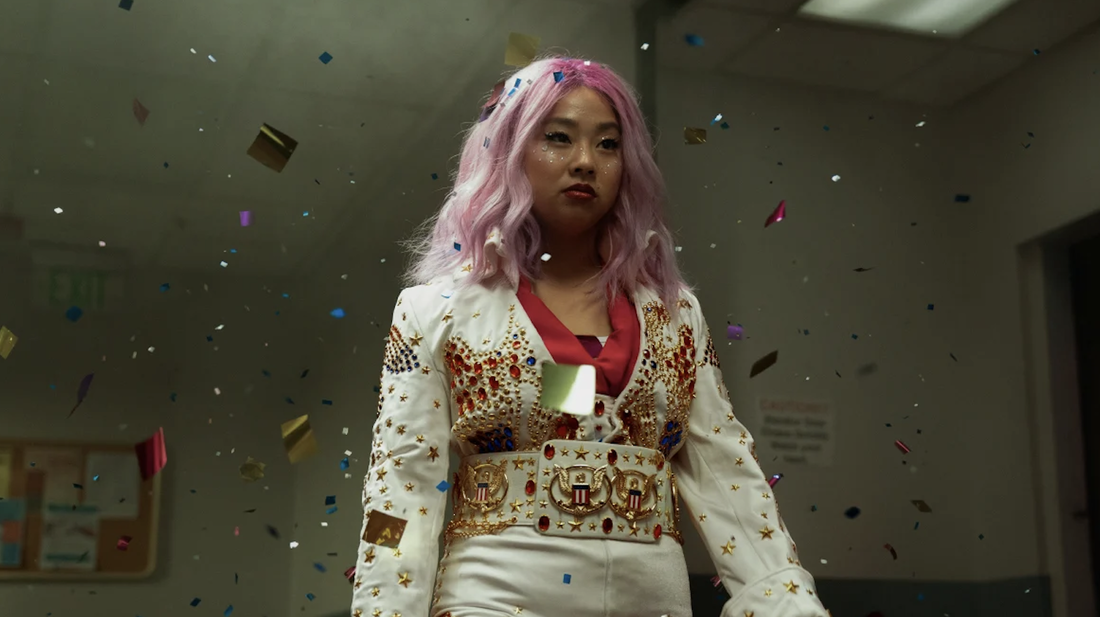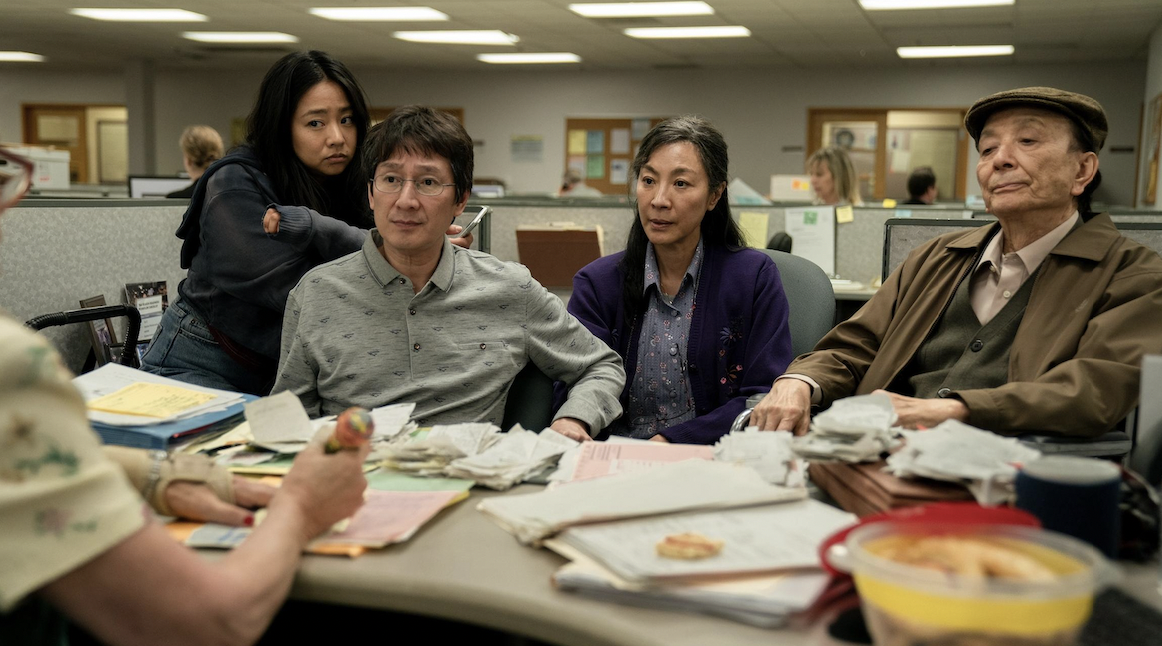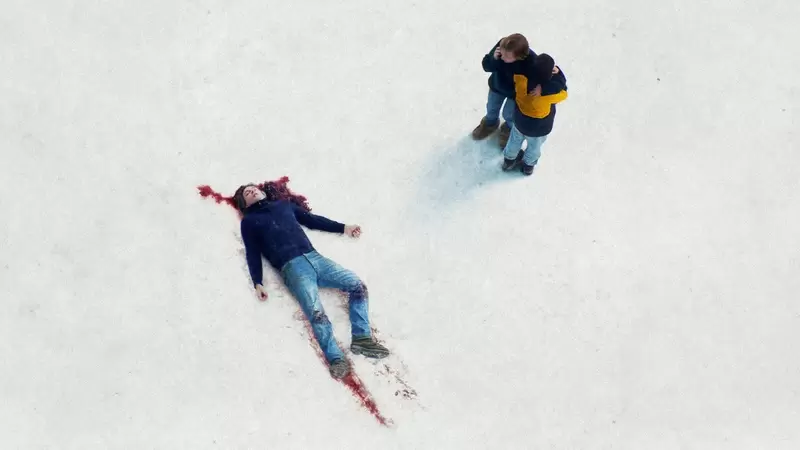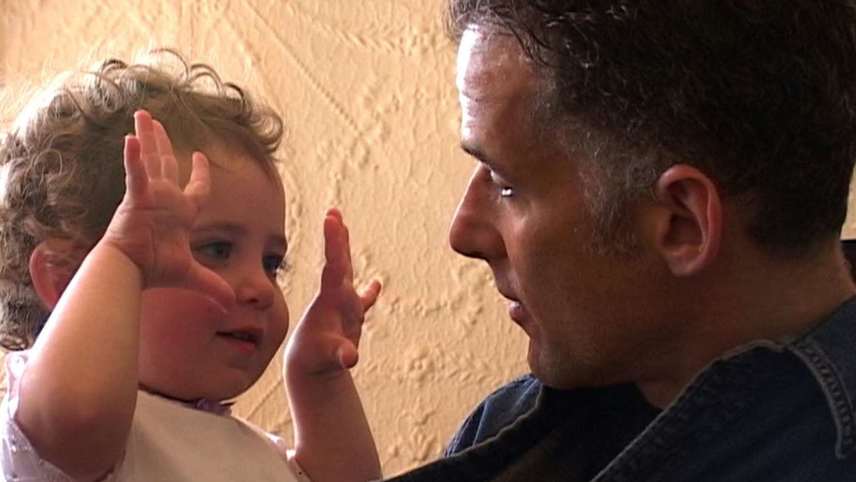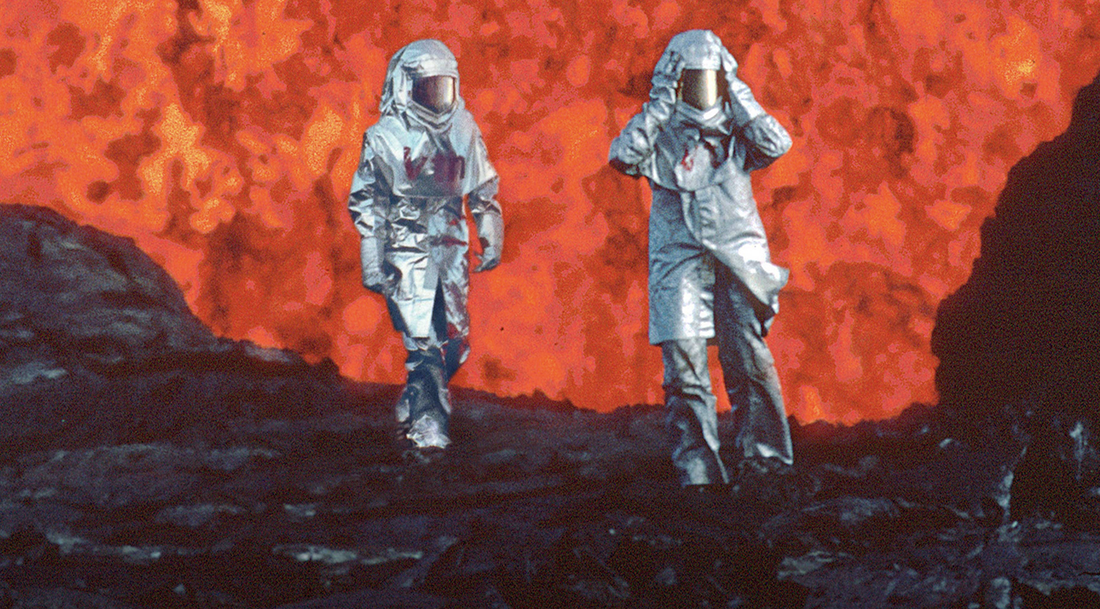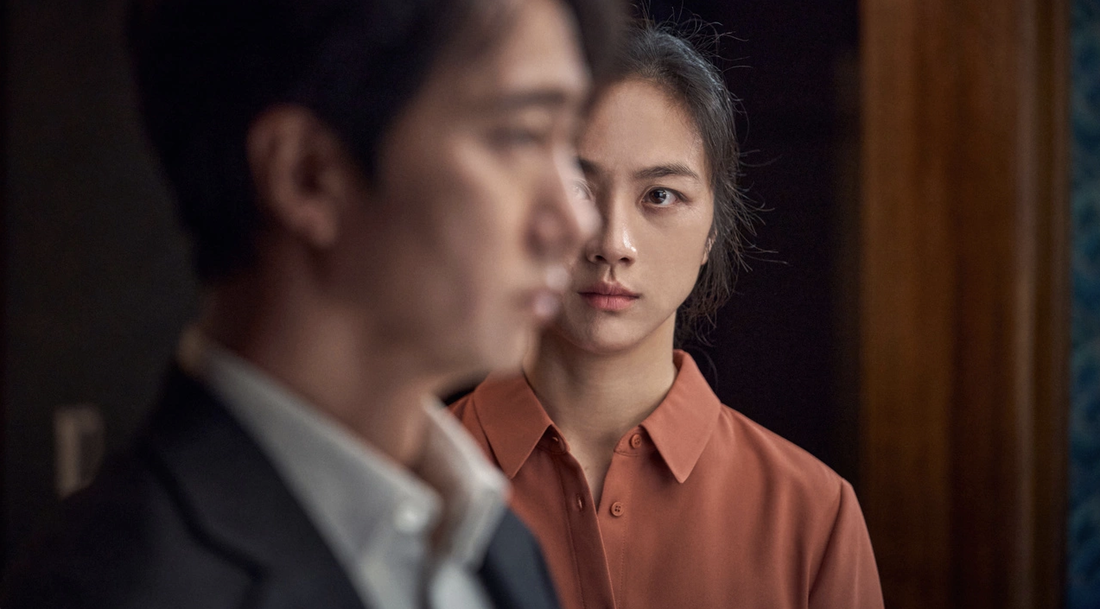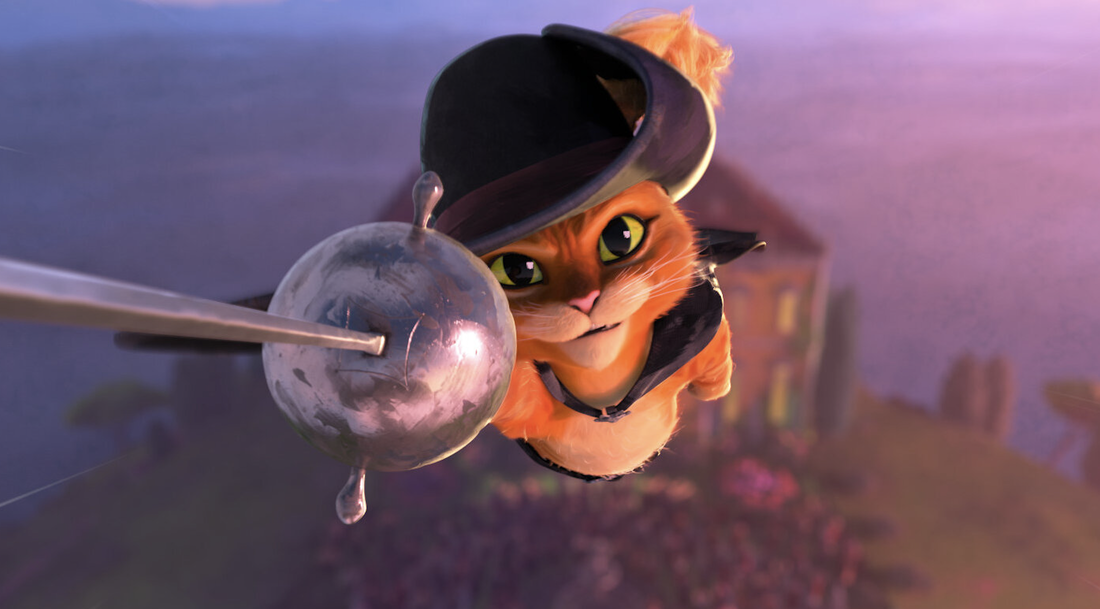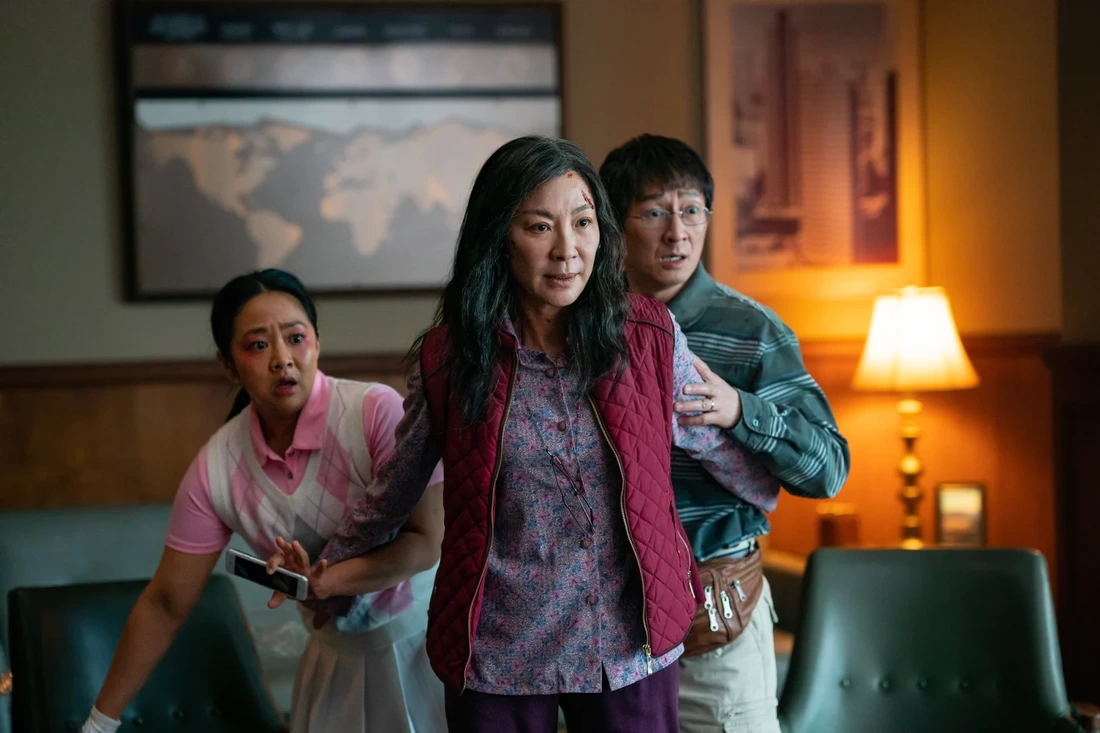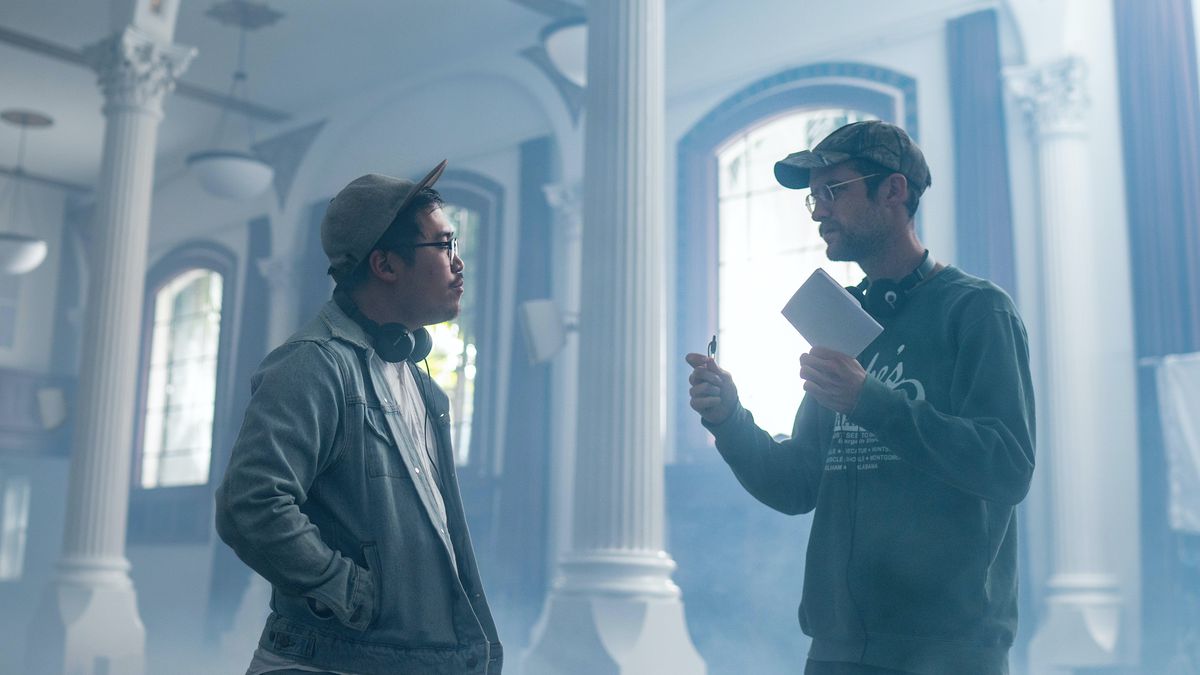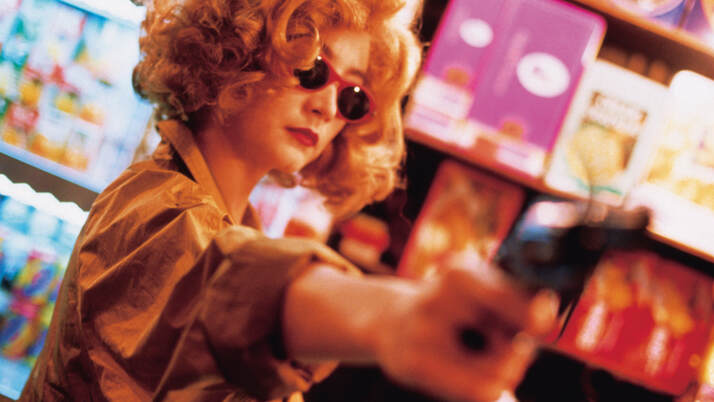|
Brought to you by the U of C Film Society! Welcome to the fourth annual Crash/Cut film awards — voted by YOU! 2023 was a fantastic year for cinema, and after weeks of nominations and voting, the results are in! Keep reading to check out the winners. A massive thanks to all the wonderful members that participated. Here's to another year of great movies! MUSIC AWARDS
TECHNICAL AWARDS
WRITING AWARDS
PERFORMANCE AWARDS
Best EnsembleBottoms Other Nominees: Barbie Saltburn Theatre Camp BEST SHORTSBest Live Action Short FilmThe Wonderful Story of Henry Sugar Wes Anderson Other Nominees: The Breakthrough (Daniel Sinclair) The Swan (Wes Anderson) Best Animated Short FilmTIE: Ninety-Five Senses (Jerusha Hess and Jared Hess) Our Uniform (Yegane Moghaddam) Best Documentary Short FilmTIE: The ABCs of Book Banning (Trish Adlesic, Sheila Nevins, and Nazenet Habtezghi) The Barber of Little Rock (John Hoffman and Christine Turner) BEST PICTURESBest Documentary Feature FilmTIE: Apolonia, Apolonia (Lea Glob) Chasing Chasing Amy (Sav Rodgers)
Best Motion Picture of the YearAnatomy of a Fall Justine Triet Other Nominees: Past Lives (Celine Song) Poor Things (Yorgos Lanthimos) May December (Todd Haynes) Best DirectorCeline Song
Past Lives Other Nominees: Justine Triet (Anatomy of a Fall) Sofia Coppola (Priscilla) Yorgos Lanthimos (Poor Things)
0 Comments
Rosemary's Sweeneyby Aidan Beatty 2024 continues to be Sydney Sweeney’s year. Having three films come out in only two months, her big-screen presence proves to be one to stay. Her latest film, which she not only acts in but also produces, Immaculate (2024), hits theatres this month. I had the lucky chance to see an early screening and will present my honest opinions on the film.
From the cold open, we are brought into the claustrophobic world of the film. Space is utilized very well in conveying its horror. From locking characters in confined spaces, or crammed hallways, this film creates a tense atmosphere. Accompanied by its ruthless sound design, no place ever truly feels safe. There’s always this eerie feeling even when nothing sinister is truly on display. At times, the film can utilize the quiet then loud jump-scare too much, but some scares come from no build up and those are the most effective. There are also some details within the set design that give off an odd vibe, a few of which I was expecting the film to adapt upon, but they don’t. They just lingered in my mind and made the film more creepy when not addressed. The first time we see Sydney Sweeney as Sister Cecila, we are made aware of her role in this society. We see how she is viewed and perceived. As said in the Bible, women bare the original sin of conception. The film is centered on this idea of life and death and being reborn. Her character is pure and she is tested. We as the audience are also tested with morality. What is right of the wrongness in others? The third act of the film is harrowing and much stronger than its slower first two. The ending lingers on this shot that starts unnerving, but does descend a tad comical. It does prove my theory that Sweeney could become a modern day scream queen. As the film picks up pace, so does she. By the final moment of the film, the audience had such a visceral reaction and one of the audience members even said, “Let me just sit with this for a moment before we leave.” another also said, “She totally girl-bossed that,” which was a response for sure. A big issue with this film for me is its characters. Most of them are not given enough time to flesh out and we are left with mostly slots and archetypes rather than compelling people. Cecilia [Sweeney] is the only one we truly get to know, as those around her don’t interact much with her and when they do it’s only to talk about herself. Characters attempt to give off this mysterious backstory, but it comes across more as lazy than interesting. They follow structured horror film beats and never give us much to see in them so that when they're gone, we don’t miss them. Or if something happens to them, we aren’t inclined to feel bad, we’re more focused on the effects instead. The effects are entertaining, but do vary from effective and fun to sometimes B-level goofy. Immaculate does proudly display its influences, but sadly, it reminds me of better films with similar themes and ideas. The likes of Rosemary's Baby (1969) and Killer Nun (1979) come to mind. I feel as though they use their respective themes better as they’re able to center in on them. This film takes too much of its time trying to figure out what it really wants to say that by its improved third act, they’ve left some of its original ideas behind. We are given more questions than answers and normally I enjoy that, but here the questions are more of plot holes rather than intriguing ones. The cold open was great and this lingering force of hooded red figures was tense, but we aren’t fulfilled with connections enough to link them all together. While not a film I would rewatch, it was still entertaining and provided a few good gore moments that I did see myself enjoying. The music and sound design create a great bit of uneasiness to some scenes and the set design is wonderful. Sydney Sweeney proves herself to be a good candidate for an upcoming scream queen and I want more. The ending leaves you with such an impact that it's hard not to appreciate the film for where it went. by Catherine McDonald What is indie sleaze? Why does it matter? A genre defined by characteristics of "dirtbag teenagers," often troubled teens who have been left behind, misfits trying to find themselves in a fucked up world that has treated them mean. Think of kids who listen to: Nirvana, Hole, MGMT, and a bunch of other alternative bands that you shouldn't know about because they're too underground. Aesthetically, it can be defined by late 90s/early to mid-2010s indie alternative style, such as grunge y2k clothing styled with indulgence and rebellion. It also is meant to be an affordable style of dressing as a response to hard economic times throughout the 2000s. A lifestyle that often, unfortunately, consists of drug use, drinking, late-night parties, and bad mistakes. For example, the TV show Skins (2007-2013) is a perfect example of "indie sleaze." It was an indie piece of media that portrayed young teens in a sleazy way that was relatable to teens. Smudged eyeliner, partying and sex all night, and depicted mental illness and abuse in a raw and edgy way. It was criticized for being too graphic and adult, and despite being an indie production, it soon became famous for being so unabashedly indie sleaze. Indie sleaze has made a resurgence on social media with Gen Z for a few reasons. The visual aesthetics have become trendy again for that “y2k” look, but I believe this genre and style has become popular again for what it represents. Indie sleaze media often portrays young people struggling, having become a messy product of the way the world has treated them. Is it not relatable to watch something like Skins in today’s climate with what young people are going through, to not want to project ourselves onto these characters? They’ve been treated the same and want to rebel in response. Besides being an affordable fashion trend in today’s economy, true indie sleaze represents the misfits and the forgotten of today’s youth. To rebel against convention and, unfortunately, experience the pain of self-indulgence and representation of raw struggles such as mental illness and abuse. It represents that inner, angry teenager in us and wants to remind you. Yes, show off your anger with that tongue piercing. Numb the pain by committing some crime. Maybe romanticize it a little and experience a messy first love. Here are 3 essential indie sleaze films to watch that have all been criticized and praised for the same reasons. 1. Thirteen (2003) directed by Catherine Hardwicke Thirteen truly represents the consequences of being thirteen and dumb and living in a rough world through the lens of that indie sleaze lifestyle. Tracy lives in a working-class family and feels estranged from her mother and ex-father. Feeling she has to grow up to cope with peer pressure and her changing world, she turns to Evie, who introduces her to stealing, drugs, sex, lying, and how to dress provocatively. She’s introduced to this world in a romanticized way, full of sleaze and eyeliner, with consequences that are all too real, portrayed in a very authentic and visually stunning way. The fashion and romanticization of the lifestyle in Thirteen is also trendy on social media now. Is it because it’s chic? Does it tell society, “fuck you, mom?” Either way, this film and its craft in expressing girlhood are appealing and enticing to future audiences on many levels. This film is an unapologetically raw portrayal of coming of age as a vulnerable girl who wants to grow up too fast and is taken advantage of by the wrong friends. An unconventional coming-of-age story that is, in fact, a reality for many young girls, Catherine Hardwicke, shows us the nuances and very complicated feelings of being pressured to grow up, with a heart-breaking conclusion that makes this story a mother-daughter love story. The blurry, low-frame cinematography lit by harsh, slimy fluorescent blue and green lighting captures that grunge, sleaze club aesthetic. It makes Tracie’s world disorientating and frightening, yet simultaneously, a chic and enticing blur. 2. Mysterious Skin (2004) directed by Gregg Araki content warning: this film is about child SA and includes depictions and scenes of graphic SA Gregg Araki is considered to be an icon in the rise of indie queer cinema in the 90s and is mainly known for his grunge, coming-of-age, indie sleaze style. His most famous films depict American society's curiosity, rage, and degenerate downfall. Mysterious Skin is one of those films, and indie sleaze represents being stuck in the fucked up society of America and being trapped in the abuse and systems that promote our suffering. Mysterious Skin is an extremely raw film. It’s a film that deals with child SA and what happens to two boys as they deal with the trauma. Neil grows up into that typical “dirtbag” teenager who causes trouble, dresses classically indie sleaze, and has a rowdy group of friends who also make trouble. All while he makes money being a prostitute and enjoying it. Brian grows up to believe he was abducted by aliens and searches for the truth. Gregg Araki’s representation of his queer characters deserves to be put into the public eye. He writes these kids for who they really are. Messy, bad, unapologetic, grunge, in love, angry, and slightly hopeful. These are his characters, but these are also real people who are queer as well and deserve to see themselves in the raw, unapologetic films of Gregg Araki. The subject matter of this film specifically is something that needs to be discussed and seen on a societal level and should be seen by future audiences to bring awareness and discussion to this kind of abuse and the trauma that follows. Gregg Araki portrays this subject matter with no reserve and shows how society and many people in their world have failed these characters, who represent very real people. He does, though, represent these young people with a slight glimmer of hope in their friendships and their bold 90s fashion that is now trendy again. He describes genuine teenagers who are lost and want to find themselves. Through wacky accessories and funky hair. In the relationships that build in the film, the love these misfits have for each other, and how they express themselves. They’re all outcasts in some way, and through their unique outfits and connections with each other, Gregg shows that despite that it all, they’re still saying “fuck you” to the world and doing it in a beautiful, self-expressive way. His film continues to encourage so-called “outcasts” today to keep doing what they do. 3. The Bling Ring (2013) directed by Sofia Coppola It is based on actual events and, at the same time, a commentary on American consumerism and celebrity obsession. A more modern take, The Bling Ring represents a late 2010s version of indie sleaze, a more glamorous version and a closer representation of what indie sleaze looks like today in the age of social media. Again, indie sleaze often represents the unforgiving world we live in and reflects it through the fashion and attitudes of its characters. The Bling Ring is no different and is very similar in style and content to Skins. These teenagers are bored, horny, wild, and poor, and they want to be celebrities they see and will go to any lengths to achieve that. They want to be better than they are. The characters are obsessed with celebrity fashion icons like Lindsay Lohan, Megan Fox and Paris Hilton. Indie sleaze, in their world, is defined by stealing to replicate this rich, party, celebrity lifestyle. They want to fulfill their fascination, be praised, and be the “it” girls at the club. They party, get drunk, and dress up, and it’s a world of Chanel, lip gloss, guns, the black market, and Myspace. Sofia Coppola accurately represents the lifestyle of modern-day consumerism influenced by peers and social media. She presents this in a cinematography style that’s fast and eye-catching. Low lighting, crazy club shots, and Myspace digital photo montages. The characters are dressed in Prada, giant sunglasses, smeared eyeliner, and shiny lip gloss. It is very representative of the late 2010s sleaze club scene, historically the last years that were considered truly indie sleaze. Indie sleaze is back and is being led by young people, young queer people, young women, who know that the world is a bit shit and are ready to rebel. They are prepared to party to forget, have fun, make mistakes, and see people who are just like them. Indie sleaze represents an essential part of the past and what’s in store for the future. The three very different but real stories of Thirteen, Mysterious Skin, and The Bling Ring are all crazy and weird and haunting in their own ways that future audiences will see themselves in. They may also want to replicate some exciting fashion and fun partying.
Either way, indie sleaze represents so much about the world and the young people surviving through it all, and it deserves to be resurrected onto the big screens again and seen. Anxiety, Static, Noiseby Aidan Beatty “These are the lockers There are the desks” This film has left me awestruck. It swirls around my mind and clutters it with many different ideas and thoughts. I felt so sad and alone while watching this. It spoke to me on a level that I wasn’t prepared for and still struggle to comprehend. It’s a journey that I feel as though will haunt me in the coming days. The entire experience was melancholic and screaming with dread in a sense. It’s a film that requires deep analysis, but more specifically, a personal analysis. It won’t appeal to everyone, but there is something within the film that can be expressed to anyone. It’s a personal and individual experience that will vary from viewer to viewer. It’s likely to be read and discussed with its varying themes and explored from different perspectives all containing their own point of view with what it could be saying and what it is saying. The cinematography is breathtakingly phenomenal. Moments have time to not only breathe but extend their raw atmosphere to such a believable and painful level. Some moments have this hint of cringe to them that doesn’t feel inappropriate, but rather emphasizes the point of raw relatability. The long takes are incredible and very impressive with what they accomplish. You get this emotion that sticks with you and follows you throughout the film. You get to experience these events unfolding on this weird personal level. The camera feels diegetic in scenes when it shouldn’t. You’re almost a third person, complicit and stalking these characters. We follow them in an uneasy way and when we stop following them and stay with a static shot, it’s extremely impactful to articulate the emotional vulnerability. The film also utilizes diegetic cameras perfectly in executing the perspectives of the videos being recorded. The opening sequence sticks out to me the most as being a flawless representation of anxiety and isolation. The framing and static camera make this moment unforgettable. The horror within this film is personal and can affect each viewer in a variety of different ways. The interpretation of the events and how the story unfolds will vary depending on the viewer’s personal experiences and what they identify with. We fill in where the story is going and what we believe will happen by way of individual creativity. This further articulates the “game world” this film sets up as the story is different for each character. This “set narrative” isn’t obvious and keeps us guessing as to where we are going. We essentially create our own theories or “fan fiction” whilst we consume this media as the characters do as well. This is where I see the ending as yet another story being told that can be altered depending on someone else’s perspective. This never happened…or did it? It’s up to interpretation and that’s where the film strives with its content. It’s experimental and uncanny with its narrative and the horror comes from what we can’t understand and more importantly what we believe is real. Reality is blurred immensely within this film, especially with the perspective shift halfway through which I personally thought was brilliant. It elevates our sense of confusion in trying to comprehend what is real and what is all an act. Where does the storytelling stop and where are characters being genuine? The internet acts as a gateway of expression, especially for those who feel isolated in articulating this expression. It is a way for one’s creativity to be shared and creates a community. Anxiety and depression can shelter these thoughts and restrict them from spreading their wings, whereas the internet can create a shield for personal struggles. Therein lies the conflict of uncertainty. Is this all an act? Is this person real? We put on a different face when we are on the internet which can alter our true personality. Is this person a complete fabrication? Are the stories they tell truthful? Anxiety floats around the internet in a dreadful way. The horror comes from not understanding if this conversation is a genuine reality or if it’s a fabrication designed to give us a false sense of security. There is no safety on the internet, and we are vulnerable. However, is that vulnerability truly personal or a personification of the ideas we wish to share? Casey is there to be human in a world of noise. A voice of isolation, self-destruction and an expression of human connection. There is a lot to be said about this and more to dive into, especially with its topic of gender, but I don’t know if I would be the best to discuss this at this very moment in my life. I will have to rewatch the film sometime, so that I can research and better explore these topics and themes before discussing them. There is a lot to unpack and more importantly discuss. This is an extremely impactful film on me and one that I am grateful to have seen. I know a lot of people won’t like it and I understand why, but personally, I thought it was incredible. It’s a wonderful expression on anxiety, loneliness, fear of technology, storytelling and identity. More importantly, it’s a film that spoke to me and one that gives me many thoughts, questions and perspectives. “I know how it’s going to end now”
Avatar: The Way of Water – Underwhelming Beautyby Emilio Siredey I still remember when I first saw James Cameron’s Avatar (2009) in theatres when it came out. Even though I was only 8 years old, I oddly recall that I found it pretty exciting and that I had fun watching that movie. And yet, despite the fact that I clearly remember enjoying the film, I don’t believe I ever thought about it again until I visited the Pandora section at Walt Disney World’s Animal Kingdom in 2019. Furthermore, through conversations and online discussions, I found that plenty of other people had a similar sentiment, appraising Avatar as cool or interesting while finding it unmemorable. As for the prevalence behind this opinion, the one explanation that I’ve come across is that, much like the thrill rides at Disney’s amusement park, the enjoyment of Avatar lies in the experience. I believe that this is exemplified most clearly by The Way of Water's biggest achievements, which are the technical and visual elements of the film. From the get-go, the Avatar movies were designed to be witnessed either in 3D or IMAX, something that has been expressed by Cameron himself as well as the cast of the film, as they were made to be cinematic experiences that would get people back to the theatres. It is by no surprise then that the production design and VFX of the movie are astounding. From the water and environments, to the creature and character design, the film feels so fluid and full of life at all times. However, in my opinion, that is about all that can be considered remarkable about the new Avatar film. Case in point, The Way of Water follows a fairly simple and somewhat cliched narrative. Without delving much into spoilers, the story takes place around 14 years after the first movie. The humans have returned to Pandora and Jake Sully, (Sam Worthington) along with his partner Neytiri (Zoe Saldana) choose to go into hiding to protect their family from the new threat. This leads them to seek refuge among the sea tribes of the Na’vi, where they have to blend in and learn to adapt to a new way of life. Already, the premise feels like a rehash of the first film’s story, where Sully had to adapt to the Na’vi’s way of life in the forest, going through their different rites of passage, only now he has to do it along with the rest of his family. Speaking of which, Jake and Neytiri’s children, while not uninteresting, do little more than fulfill the specific trope that each one of them represents. Neteyam (Jamie Flatters) is the responsible older brother who looks after his siblings. Kiri (Sigourney Weaver) is the weird kid that doesn’t quite fit in. Lo’ak (Britain Dalton) is the problematic younger son who’s story mirrors that of his father, and Tuk (Trinity Bliss) is the youngest sibling who adds little to the story and serves mostly as comic relief. I also feel that I should mention that Sigourney Weaver’s character was slightly uncanny and off putting, as her voice doesn’t quite feel right when matched with the face of a teenager.
In terms of pacing, at points the movie seems to drag on for quite a bit, especially with all of the ‘sightseeing’ segments where the characters just sort of gaze around at the world around them in awe. Even though it is understandable for the film take its time including a lot of these scenes, with the environment being one of the franchise’s main attractions and all, and while they are definitely well made and pretty to look at, at times it feels more like something out of a National Geographic documentary than a feature-length film. This is not to say that the story is bad or poorly constructed, but I feel like we should expect more out of one of the highest grossing films of all time. In the end, Avatar: The Way of Water, and the Avatar franchise in general, is much like the thrill rides that you find at an amusement park, visually pleasing and somewhat exciting to experience, plus fairly straightforward and somewhat shallow when you look further into it. However, despite its lack of depth and somewhat cliche narrative, The Way of Water is still an enjoyable and fun cinematic experience, and I can see why so many people like it. After all, most people like thrill rides as well. A little nervous, always cracking jokes: Funny Ha Ha reviewby Hazel Cochrane Two friends sit in a near-empty diner. They had previously agreed to meet up to talk more about where their relationship stands — but they don’t end up touching on that topic at all. Instead, they try to make each other laugh, playing with food, smiling awkwardly, desperately trying not to run out of funny things to do and say. They laugh at each others’ forced jokes, and their own. Alex starts telling Marnie she’s crazy. Marnie says, “What do I do now?” Alex says, “I don’t know. Make some fart noises or something. Well, you don’t have to, but it’s always funny”.
Andrew Bujalski's mumblecore classic Funny Ha Ha is full of things that we actually laugh at every day, and wish we didn't have to. Long-lasting close-up shots of characters' faces during nonsensical, dreadfully long conversations make the audience much too aware of these peoples’ struggle to be present and always say the right thing. You can even feel the pressure to make the right amount of eye contact in almost every interaction throughout the film. Bujalski ventures to depict things visually how they are, and make his audience feel exactly how the characters do in those uncomfortable situations. It’s shot simply, on a very modest budget, driven by the goofy and honest performance of Kate Dollenmeyer as Marnie. We become familiar with each character’s distinctive body language, what their tics are. Anyone watching Funny Ha Ha will be hit hard with the pain of desperately trying to make others laugh, or be pleasant, or fit into the image your friends have of you. Marnie walks through the film with long arms dangling at her sides, bobbing her head, smiling goofily. She’s always out of a job, and goes to lots of parties. Her friends say she’s the most spontaneous person they know. She spends most of her time with her hipster friends, her unrequited crush Alex, and Mitchell, played by director Andrew Bujalski, an awkward guy who hovers over her at work, trying to converse, constantly apologizing. While Marnie tries to spend time with and hopefully build a relationship with Alex, otherwise drifting through life fairly aimlessly, Mitchell becomes progressively more forward with Marnie, who deflects his advances as politely as she can, trying to save the potential they have to be good friends. Mitchell eventually becomes demanding of Marnie’s attention and enthusiasm, in a drawn-out scene that will have viewers seething. Her other friendships in this film are portrayed very realistically: some seem close, or like they want to help her out, and are revealed later to be completely ingenuine; others exist in a gray zone. Marnie feels and acts differently around different people, but no matter who she’s with, she’s the same old Marnie: a little nervous, always cracking jokes. Some kind of drastic change, or explosion of pent-up anger might satisfy viewers better — but Bujalski doesn’t want to symbolize emotions through revolution. He wants to show the real thing, which is that personal growth often happens gradually. Marnie — like every human to some degree — just wants the people in her life to like her. Funny Ha Ha is an engaging film that will leave anyone feeling seen. A few favourites from 2022, brought to you by the UCFS Execs. Natalie (President)What a year for cinema! From Everything, Everywhere All at Once to TAR to Marcel the Shell with Shoes On, so many amazing films came out of 2022. For me however, it is Aftersun directed by Charlotte Wells and starring Frankie Corio and Paul Mescal which truly takes the cake as the best film of 2022. Aftersun is a memory of the final holiday Sophie took with her dreamy, yet deeply troubled, single father Callum in the late 90s. While contemplating one's past is a common trope in storytelling, Wells adds layers of tension to this process by depicting this reflection as also a reconciliation between Sophie's memories, imagined experiences, and 'objective' visual media artifacts. And I think that it is this struggle which makes the film's exploration of memory, family, and mental health so unique, honest and extremely wise. Many people have said that they have connected very deeply to this film, and while there are many reasons why, I believe that one is that the tension between memory and media really speaks to our times where it is so common to record any and every aspect of our lives. Max (VP Programming)Favourite: Aftersun. It's probably recency bias but Aftersun might be my favourite film released after 2012 (I adore a number of films from that year). It tells the story of Sophie who is trying to piece together home video footage of a childhood vacation to understand her father. It is a story that could only be told as a film, and it has my highest recommendation. It is beautifully restrained and brutally honest. Honourable Mentions: Puss in Boots and Ice Merchants were a win for animation. Puss in Boots was brilliantly paced, heartfelt and so very expressive in both the score and animation. It has its roots in the spaghetti westerns of the 60s and it shows. Ice Merchants tells a story without words. The animation and sound design is piercing. Its free to watch on The New Yorker and is only 14 minutes long. Emilio (Advisor)Edward Berger’s All Quiet on the Western Front (2022) is unlike other war movies I’d seen before. Despite not being the most explicitly violent or gruesome film, somehow it still manages to be more vicious than many other movies of the same genre. While most other War Dramas I’ve seen try to tell hopeful tales about acts of heroism and persevering even through the worst of situations, All Quiet on the Western Front tells a tragic story about how soldiers can also be victims of the wars they fight in. The beautifully shot, peaceful moments between Paul (Felix Kammerer) and his fellow soldiers in contrast with the hectic and unforgiving battle scenes paint a heartbreaking picture of what War is like for these young men. Their patriotism and enthusiasm for battle don’t even make it past the first act of the movie, instead replaced with a constant sense of dread and longing for the fighting to stop. Instead of heroes, the film frames its protagonists as possible cannon fodder, as all they can do is hope that they make it out alive for the next fight. Moreover, through its harrowing finale, which effectively mirrors the film’s opening sequence, All Quiet on the Western Front conveys how war diminished these men into nothing but uniforms and dog tags, stripping them away from their humanity. Also, since the story focuses on the German side of WWI, I appreciate how this movie brings a different view from the one-sided portrayal that is generally shown in most other western media, which in my opinion further aids the idea of soldiers as victims of war, showcasing only people following orders that exceed them. Overall, I found that All Quiet on the Western Front was deeply impactful and engaging, and I thoroughly enjoyed the film’s approach to the war drama. With stunning visuals, strong themes and subject matter, plus a well-executed story, I consider this a film that most people should watch. Emma (Crash/Cut Editor)Joyland by Saim Sadiq is something special. An ensemble drama at its finest, Sadiq’s feature film directorial debut addresses questions of finding one’s way under the overwhelming weight of established conventions and social constraints. The film is set in Lahore, Pakistan, where a traditional family navigates desire, longing, and love in relation to gender norms and class alienation. Joyland articulates a rich spectrum of emotions—it is at once tender, melancholic, and joyous. It is made with so much care and empathy, reflecting on the complex themes of autonomy, identity, and repression shared by many. Actual People by Kit Zauhar deserves an honourable mention. Okay, so this film was technically made in 2021, but it officially released in 2022. Let me have this! Actual People is a fantastic mumblecore that speaks to anxieties of graduation, family, and love—and the aimlessness of those in-between moments. Zauhar’s debut is perceptive, witty, and sharp. The uncomfortable conversations feel completely organic. This film has something to offer to anybody at a stage in their life where they feel uncertain about both the present and the future. Jenna (VP Financials)Despite being a more recent watch compared to other films throughout the year, Charlotte Wells’ film Aftersun is my favourite film of 2022. Charlotte Wells’ crafts Aftersun as an immensely personal film, which creates an opportunity for introspection within our own lives. In short, the film implicitly explores aspects of familial dynamics and depression through presenting the experience of a woman reflecting on a past trip to the tropics with her father. It prevails as a tender, melancholic meditation on our understanding of our parents’ mental health. I would absolutely recommend this film to anyone interested, as it has made a profound impact on aspects of my perspective. However, be warned! It is quite a devastating film and you may never listen to “Under Pressure” by Queen and David Bowie in the same way.
Welcome to the Third Annual Crash/Cut AwardsBrought to you by the U of C Film Society Hi everyone! We are SO excited to be hosting our third annual film awards right here on Crash/Cut. 2022 was an incredible year for cinema, and after weeks of nominations and voting, the results are finally in! Keep reading to check out the winners. A massive thanks to our wonderful members who participated. We appreciate you! Here's to another year of great movies. MUSIC AWARDS
TECHNICAL AWARDS
WRITING AWARDSPERFORMANCE AWARDS
Best EnsembleEverything Everywhere All at Once Other Nominees: Bodies Bodies Bodies Women Talking BEST SHORTS
BEST PICTURES
Best Motion Picture of the YearEverything Everywhere All at Once Daniel Kwan and Daniel Scheinert Other Nominees: Aftersun (Charlotte Wells) Best DirectorDaniel Kwan and Daniel Scheinert Everything Everywhere All at Once Other Nominees:
Charlotte Wells (Aftersun) Martin McDonagh (The Banshees of Inisherin) Time and Wong Kar-waiby Catherine McDonald Wong Kar-wai is an iconic Hong Kong director and filmmaker known for his romantic storytelling, bright saturated colours, and unique in-camera filmmaking techniques that have become his signature looks. When most people think of Wong Kar-wai, they think of visual techniques such as change in frame rate, and blurry, dreamy effects. These techniques are referenced in films such as Everything, Everywhere All at Once (2022), a movie that embraces and celebrates Asian cinema, showing the legacy that he’s created. He’s been coined “the most romantic filmmaker in the world” by Richard Corliss, a film critic for Time Magazine. Most of his notable films suggest that humans are lonely beings who long for something missing in their lives, something or someone who helps us feel less alone, especially in the lush, chaotic world of busy, neon Hong Kong where it’s easy to feel alone and misunderstood in a crowd. His films suggest that time and how it moves around our lives is correlated to our loneliness and desires, that time plays a factor in how our relationships play out and end. In Chungking Express (1994), speed and time represents the characters’ personalities and feelings, and how the world around them moves against them. The film is split into two stories, with the first story revolving around Cop 223 recovering from a breakup, and Blondie on the run from a failed drug deal. With their story, Wong Kar-wai heavily utilizes step-printing to create a dreamy sense of motion. There’s a scene where Cop 223 is chasing after a criminal through the streets of Hong Kong, and another scene where Blondie is running from people trying to take her down. Both of these sequences have a time-lapse effect that makes the characters running look blocky and slow and out of place, but at the same time the world around them is fast and smeary — accomplished through step-printing. They’re visually appealing scenes, but the cinematography of these scenes were a conscious choice made to show how both of these characters live fast-paced lives. They are always on the run, the world around them is always moving fast despite their disconnect to the crowd, and they are people who have lifestyles that force them to make quick decisions. Cop 223 is the kind of person to make the quick choice to fall in love with Blondie, a stranger. Blondie is the kind of person to make the quick choice to kidnap a child. Time is a big factor for these characters, emphasized by these stylized time-lapse montage sequences done with step-printing. Their heartbreaks and failures have deadlines in the film. Cop 223 references “May 1st” as the day his ex-girlfriend moved on from him, a month after April 1st, when she dumped him. Blondie has to recover from her drug deal before the next day, or she’s in trouble. They both move fast, disconnected from the world around them, and Wong Kar-wai uses step-printing to show how time around them correlates to Cop 223’s loneliness and longing and into his quick new-found love with Blondie. Quentin Tarantino’s opening to Reservoir Dogs (1992) utilizes this technique, but when “step-printing” is Googled, one will find that most results show Wong Kar-wai’s name next to it, truly making him the king of this technique to represent time He also uses under-cranking in Chungking Express; another technique made iconic under his name. This plays a huge part in manipulating time in the second story of Chungking Express. The characters and how time revolves around them in this story are almost the opposite from the first story. Cop 663, like Cop 223, is also recovering from a heartbreak, while Faye is a restaurant worker going with the flow of life. The characters here have slow lives compared to the first set of characters. Cop 663 takes a long time to get over his heartbreak, and the progressing relationship between him and Faye takes place over a long period, as opposed to one night, like Cop 223 and Blondie’s romance. Faye is aimless and isn’t on the run from anything. Together, these people go through the motions of their slow jobs and slow-burn their feelings for each other. This is demonstrated by several sequences of under-cranking and a mixture of step-printing, emphasizing their loneliness and the time it takes for them to find they belong together as they take time to get to know each other. When they first become acquainted, we see a sequence of Cop 663 slowly drinking a coffee with Faye next to him, daydreaming. As they are lost in their own worlds, the people who walk by around them appear to be moving really fast, jittery and blocky, while Cop 663 and Faye appear to move extremely slowly, almost still. It’s a very stylized sequence and feels intentionally much slower than the time-lapse sequences of the first story. It was achieved by under-cranking the camera and then having extras walk by the camera really fast so that when their movements were captured with fewer frames, it would appear to be blocky and smeared with an open camera shutter. The actors for Cop 663 and Faye were directed to move extremely slowly so that they would appear to almost be still amidst the chaos of Hong Kong. This sequence shows how in a busy city, these two characters almost don’t belong in all of it, disconnected from the crowd of many around them, just like Cop 223 and Blonde. They move slowly and aimlessly through their routine lives, lonely in a crowd of many, lost within themselves, looking for love that’s right in front of them. Wong Kar-wai uses these in-camera techniques for different story intentions, but at the end all show how these characters are similar in their loneliness and how time plays a factor in their longing and desires. Time is a recurring character in many of his films, in which love and feelings often have a deadline, and relationships are connected and stretched across periods of time. Time can move so fast when we’re chasing after something, or running from something. Chasing after people and dreams who leave us faster than we’d like them to, maybe running from the truth that the person we love really did leave us on April Fool’s Day. Time can move so slow when we’re waiting for something too. Despite this loneliness in isolated pockets of time, time brought this group of people as couples together. When you choose to impulsively in the moment fall in love with the first woman who walks through the door, and so by chance, the woman who walks through is the one who ends up paging you to wish you a “happy birthday” when no one else did. When your feelings for a policeman develop slowly and come unexpectedly, and so as he recovers from his heartbreak, he starts to see that you’ve become a part of his life. Time can be our enemy when it feels like everything is moving against us, but Wong Kar-wai suggests we also consider how time and chance can push us to connect with the people around us who are more like us than we think, despite our loneliness, or the deadlines we set for ourselves. These stylized techniques have created romantic, dreamy sequences that have stapled him as something entirely unique in Asian cinema. He has a unique perspective on romance and loneliness and is able to communicate that vision with cinematographers in fractured scriptwriting, guerilla filmmaking, and risk-taking. His films' lush visuals and romantic themes add a sense of beauty to my perspective of life and have taught me that humans are more connected in loneliness and heartache, as opposed to those feelings disconnecting us from the world. As a filmmaker, I've read about how his unique techniques are achieved through risk-taking and often coming up with new ideas on the day, which inspires me to be more of a filmmaker who should take more risks and be more confident. His unstructured storytelling tells of longing and hidden feelings in fictional characters that feel real. These characters represent a part of all of us, where we long to feel a little less lonely sometimes. Where we hope time might work in favour of our desires. He inspires me to view cinema and life with more of a rose-coloured lens and that it's worth trying to connect with the world through risk-taking. Time is a confidant in heartbreak and secrets, and people can intercross with each other and affect each other’s lives in ways unrealized. As he wrote in his film 2046 (2004): “Love is all a matter of timing. It’s no good meeting the right person too soon or too late.” References Johnson, Meagan, Emily Nagler, Dylan Kanaan, Joalda Morancy, and Haina Lu. "The Expiration of Time and Love: Analyzing Speed of Motion in Wong Kar Wai's Chungking Express." Intermittent Mechanism. April 23, 2020. https://intermittentmechanism.blog/2020/04/23/the-expiration-of-time-and-love-analyzing-speed-of-motion-in-wong-kar-wais-chungking-express/.
"Wong Kar Wai's Chungking Express – Speed and Time." A Void in Frame. March 15, 2017. https://www.youtube.com/watch?v=DZ1fEC67GO4&feature=youtu.be. Matt Reeves’ The Batman: A True Comic Book MovieThe Batman | Directed by Matt Reeves | 2022 | DC Films | 176 minutes by Emilio Sireday First of all, I should say that my opinion of this film is slightly biased, as I’m a big fan of Superhero Movies and Batman is by far my favourite superhero. Nevertheless, I confidently believe that most people could find some degree of enjoyment in this movie whether they are familiar with the subject matter or not. Matt Reeves’ The Batman (2022) truly feels like a movie made from a comic book. For example, there’s the use of Bruce Wayne’s (Robert Pattinson) inner monologue throughout the film, which functions similarly to narrative boxes in a graphic novel. Furthermore, the film has been largely compared to “The Long Halloween” story by Jeph Loeb from 1996, as the appraised comic series served as one of the major inspirations for the film, which shares in its dark, detective mystery plot and character dynamics (Kurten, 2022). The film also takes from the Year One and Golden Age iterations of the character, displaying Batman’s first years as a vigilante and his brutal approach towards crime fighting. This isn’t to say that the film merely rides on the success of previous stories, as it handles its narrative pretty effectively and manages to still feel fresh. There’s not much time wasted on introductions, as the movie assumes that you are likely familiar with these characters to some degree. There’s enough information to clue you in if you’re out of the loop, but not so much as to feel tedious and overdone. Despite there being quite a few characters involved in the plot, I felt it did a good job of managing them all. Jeffrey Wright’s portrayal of Jim Gordon fits very well with the atmosphere of the film, being more aware of the corruption in Gotham and thus putting more trust in Batman. Falcone (John Turturro) and Penguin (Colin Farrell) work well as secondary villains, actually serving a purpose in the story rather than just being thrown in for fan-service. In my opinion, The Batman handles Selina Kyle’s (Zoe Kravitz) character the best out of all the live-action Batman movies. Zoe Kravitz does a great job in her portrayal and really brings out both the danger and allure of the character. On top of that, she also has good motivations for being a part of the plot outside of her connection with Batman, and there’s logical distance between the two of them for the level at which their relationship is at. The Riddler (Paul Dano) works pretty well as the main antagonist of the film, especially considering some of the previous iterations of the character not being taken very seriously, so having him as a darker villain was pretty interesting. As for The Batman himself, I personally enjoyed Pattinson’s brooding nihilistic take on the character. It fits well with the cynic tone of the film and makes the character’s development more meaningful. I also like how at times, he doesn’t seem to have full control over his actions, showing how this is a younger Bruce that still has a lot of mismanaged rage. This also results in him being The Batman more than Bruce Wayne, and explains his fighting style being a lot more brutal. The design aspects of the film are also phenomenal. The city of Gotham is portrayed similarly to how it is in the Arkham games and Todd Phillips’ Joker (2019), providing a sombre and obscure aesthetic that, along with Michael Giaccino’s score, really sells the darkness that lurks within the city and how foul of a place it can be. However, even with the darker look, the movie doesn’t look dull in the slightest. The different tone of yellow, red, and blue lights that adorn the night scenes ensure that film remains vibrant and visually pleasing. The colour and lighting could also be said to hold symbolic value, communicating how Gotham really comes to life at night in contrast to the cold lighting used for most of the day scenes. There’s also the clear use of colour to represent specific characters, with Batman’s red and black and The Riddler’s green. The costume design is another highlight for The Batman. There’s an almost minimalistic aspect to the costumes that works really well in my opinion, especially in Selina’s case. The Riddler’s design is also very interesting, with the straitjacket aesthetic of his mask and the glasses on top making for an eerie effect. Batman’s suit is definitely the best, and in my opinion, he’s never looked better in the big screen. The armoured and rough look really sell the brutality of this version of the character. One particularly astounding aspect of the film was how the visual details and sound design add some real weight to the suit, which is especially visible during the action sequences. All in all, I believe The Batman to be the best live-action iteration of the character that I have seen so far, and I’m glad that Warner Bros was able to produce this through the mess that have been their recent attempts at comic book movies. I really recommend watching this film, especially so if you’re a fan of the character. 5/5 Reference Kurten, Guillermo. “The Batman: 7 Best Comics That Influenced The Movie.” Screenrant. March 8, 2022. https://screenrant.com/the-batman-best-comics-that-influenced-inspired-movie/#ego.
|
Explore |
About |
© COPYRIGHT 2019. ALL RIGHTS RESERVED.
|





























